
https://www.amazon.com/Voice-Desert-Valerio-Stefano-ebook/dp/B0CJLZ2QY5/
SITEMAP
Make a donation: IBAN: IT36M0708677020000000008016 - BIC/SWIFT: ICRAITRRU60 - VALERIO DI STEFANO or
Privacy Policy Cookie Policy Terms and Conditions
Managing Single Sign-On and Smart Cards
For Red Hat Enterprise Linux 6
Edition 1
Copyright © 2010 Red Hat, Inc.
Legal Notice
1801 Varsity Drive
Raleigh, NC 27606-2072 USA
Phone: +1 919 754 3700
Phone: 888 733 4281
Fax: +1 919 754 3701
Abstract
- About This Guide
- 1. Introduction to the Enterprise Security Client
- 2. Using Pluggable Authentication Modules (PAM)
- 3. Using Kerberos
- 4. Using the Enterprise Security Client
- 4.1. Launching Enterprise Security Client
- 4.2. Overview of Enterprise Security Client Configuration
- 4.3. Configuring Phone Home
- 4.4. Using Security Officer Mode
- 4.5. Configuring SSL Connections with the TPS
- 4.6. Customizing the Smart Card Enrollment User Interface
- 4.7. Disabling LDAP Authentication for Token Operations
- 5. Using Smart Cards with the Enterprise Security Client
- 6. Configuring Applications for Single Sign-On
- Glossary
About This Guide
- Public-key cryptography and the Secure Sockets Layer (SSL) protocol
- Intranet, extranet, Internet security, and the role of digital certificates in a secure enterprise
- LDAP and Red Hat Directory Server
1. Additional Reading
- Red Hat Enterprise Linux Deployment Guide covers a comprehensive selection of security and configuration topics, including access controls, network configuration, SELinux, and single sign-on, along with other deployment and management considerations.
- Red Hat Enterprise Linux Security Guide provides an overview of security concepts, such as server security and potential network threats, and describes how to configure Red Hat Enterprise Linux 6.0 servers and workstations, virtual private networks, and firewalls for effective security. It also covers how to assess vulnerabilities in the system and to detect and respond to intrusions.
- Red Hat Enterprise Linux SELinux Guide gives an overview of SELinux concepts and details how to configure and use SELinux effectively on a Red Hat Enterprise Linux system.
- Red Hat Enterprise Linux Installation Guide provides procedures and options for installing Red Hat Enterprise Linux 6.0.
2. Examples and Formatting
2.1. Formatting for Examples and Commands
Example 1. Example Command
service pki-ca start
2.2. Tool Locations
/usr/bin directory. These tools can be run from any location without specifying the tool location.
2.3. Guide Formatting
| Formatting Style | Purpose |
|---|---|
Monospace font
| Monospace is used for commands, package names, files and directory paths, and any text displayed in a prompt. |
Monospace with a background | This type of formatting is used for anything entered or returned in a command prompt. |
| Italicized text | Any text which is italicized is a variable, such as instance_name or hostname. Occasionally, this is also used to emphasize a new term or other phrase. |
| Bolded text | Most phrases which are in bold are application names, such as Cygwin, or are fields or options in a user interface, such as a User Name Here: field or button. |
NOTE
IMPORTANT
WARNING
3. Giving Feedback
- Select the Red Hat Enterprise Linux product.
- Set the component to
doc-Managing_Smart_Cards. - Set the version number to 6.0.
- For errors, give the page number (for the PDF) or URL (for the HTML), and give a succinct description of the problem, such as incorrect procedure or typo.For enhancements, put in what information needs to be added and why.
- Give a clear title for the bug. For example,
"Incorrect command example for setup script options"is better than"Bad example".
4. Document History
| Revision History | |||
|---|---|---|---|
| Revision 6.0.0 | Thu Oct 22 2009 | ||
| |||
Chapter 1. Introduction to the Enterprise Security Client
- Supports Global Platform-compliant smart cards.
- Enrolls security tokens so they are recognized by the token management system in Red Hat Certificate System.
- Maintains the security token, such as re-enrolling a token.
- Provides information about the current status of the token or tokens being managed.
- Supports server-side key generation through the Certificate System subsystems so that keys can be archived and recovered on a separate token if a token is lost.
1.1. Red Hat Enterprise Linux, Single Sign-On, and Authentication
- Kerberos-based authentication
- Smart card-based authentication, using the Enterprise Security Client tied into the public-key infrastructure implemented by Red Hat Certificate System
- A user inserts a smart card into the card reader. This is detected by the pluggable authentication modules (PAM) on Red Hat Enterprise Linux, which triggers the Enterprise Security Client.
- The system maps the certificate to the user entry and then compares the presented certificates on the smart card to the certificates stored in the user entry.
- If the certificate is successfully validated against the key distribution center (KDC), then the user is allowed to log in.
1.2. Red Hat Certificate System and the Enterprise Security Client
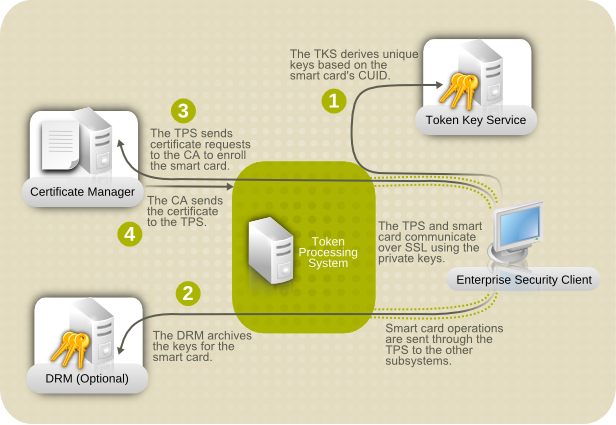
Figure 1.1. How Certificate System Manages Smart Cards
- The Token Processing System (TPS) interacts with smart cards to help them generate and store keys and certificates for a specific entity, such as a user or device. Smart card operations go through the TPS and are forwarded to the appropriate subsystem for action, such as the Certificate Authority to generate certificates or the Data Recovery Manager to archive and recover keys.
- The Token Key Service (TKS) generates, or derives, symmetric keys used for communication between the TPS and smart card. Each set of keys generated by the TKS is unique because they are based on the card's unique ID. The keys are formatted on the smart card and are used to encrypt communications, or provide authentication, between the smart card and TPS.
- The Certificate Authority (CA) creates and revokes user certificates stored on the smart card.
- Optionally, the Data Recovery Manager (DRM) archives and recovers keys for the smart card.
Chapter 2. Using Pluggable Authentication Modules (PAM)
2.1. About PAM
- A common authentication scheme that can be used with a wide variety of applications.
- Significant flexibility and control over authentication for both system administrators and application developers.
- A single, fully-documented library which allows developers to write programs without having to create their own authentication schemes.
/usr/share/doc/pam-version# directory contains a System Administrators' Guide, a Module Writers' Manual, and the Application Developers' Manual, as well as a copy of the PAM standard, DCE-RFC 86.0.
2.2. PAM Configuration Files
/etc/pam.d/ directory contains the PAM configuration files for each PAM-aware application.
2.2.1. PAM Service Files
/etc/pam.d/ directory. Each file in this directory has the same name as the service to which it controls access.
/etc/pam.d/ directory. For example, the login program defines its service name as login and installs the /etc/pam.d/login PAM configuration file.
2.2.2. PAM Configuration File Format
module_interface control_flag module_name module_arguments2.2.2.1. PAM Module Interfaces
auth— This module interface authenticates use. For example, it requests and verifies the validity of a password. Modules with this interface can also set credentials, such as group memberships or Kerberos tickets.account— This module interface verifies that access is allowed. For example, it may check if a user account has expired or if a user is allowed to log in at a particular time of day.password— This module interface is used for changing user passwords.session— This module interface configures and manages user sessions. Modules with this interface can also perform additional tasks that are needed to allow access, like mounting a user's home directory and making the user's mailbox available.
NOTE
pam_unix.so provides all four module interfaces.
auth required pam_unix.so
pam_unix.so module's auth interface.
sufficient or requisite value, then the order in which the modules are listed is important to the authentication process.
reboot command normally uses several stacked modules, as seen in its PAM configuration file:
[root@MyServer ~]# cat /etc/pam.d/reboot #%PAM-1.0 auth sufficient pam_rootok.so auth required pam_console.so #auth include system-auth account required pam_permit.so
- The first line is a comment and is not processed.
auth sufficient pam_rootok.so— This line uses thepam_rootok.somodule to check whether the current user is root, by verifying that their UID is 0. If this test succeeds, no other modules are consulted and the command is executed. If this test fails, the next module is consulted.auth required pam_console.so— This line uses thepam_console.somodule to attempt to authenticate the user. If this user is already logged in at the console,pam_console.sochecks whether there is a file in the/etc/security/console.apps/directory with the same name as the service name (reboot). If such a file exists, authentication succeeds and control is passed to the next module.#auth include system-auth— This line is commented and is not processed.account required pam_permit.so— This line uses thepam_permit.somodule to allow the root user or anyone logged in at the console to reboot the system.
2.2.2.2. PAM Control Flags
required— The module result must be successful for authentication to continue. If the test fails at this point, the user is not notified until the results of all module tests that reference that interface are complete.requisite— The module result must be successful for authentication to continue. However, if a test fails at this point, the user is notified immediately with a message reflecting the first failedrequiredorrequisitemodule test.sufficient— The module result is ignored if it fails. However, if the result of a module flaggedsufficientis successful and no previous modules flaggedrequiredhave failed, then no other results are required and the user is authenticated to the service.optional— The module result is ignored. A module flagged asoptionalonly becomes necessary for successful authentication when no other modules reference the interface.include— Unlike the other controls, this does not relate to how the module result is handled. This flag pulls in all lines in the configuration file which match the given parameter and appends them as an argument to the module.
IMPORTANT
required modules are called is not critical. Only the sufficient and requisite control flags cause order to become important.
pam.d manpage.
2.2.2.3. PAM Module Names
libpam, which can locate the correct version of the module.
2.2.2.4. PAM Module Arguments
pam_userdb.so module
uses information stored in a Berkeley DB file to authenticate the user.
Berkeley DB is an open source database system embedded in many
applications. The module takes a db argument so that Berkeley DB knows which database to use for the requested service. For example:
auth required pam_userdb.so db=/path/to/BerkeleyDB_file/var/log/secure file.
2.2.3. Sample PAM Configuration Files
Example 2.1. Simple PAM Configuration
#%PAM-1.0 auth required pam_securetty.so auth required pam_unix.so nullok auth required pam_nologin.so account required pam_unix.so password required pam_cracklib.so retry=3 password required pam_unix.so shadow nullok use_authtok session required pam_unix.so
- The first line is a comment, indicated by the hash mark (
#) at the beginning of the line. - Lines two through four stack three modules for login authentication.
auth required pam_securetty.so— This module ensures that if the user is trying to log in as root, the tty on which the user is logging in is listed in the/etc/securettyfile, if that file exists.If the tty is not listed in the file, any attempt to log in as root fails with aLogin incorrectmessage.auth required pam_unix.so nullok— This module prompts the user for a password and then checks the password using the information stored in/etc/passwdand, if it exists,/etc/shadow.The argumentnullokinstructs thepam_unix.somodule to allow a blank password. auth required pam_nologin.so— This is the final authentication step. It checks whether the/etc/nologinfile exists. If it exists and the user is not root, authentication fails.NOTE
In this example, all threeauthmodules are checked, even if the firstauthmodule fails. This prevents the user from knowing at what stage their authentication failed. Such knowledge in the hands of an attacker could allow them to more easily deduce how to crack the system.account required pam_unix.so— This module performs any necessary account verification. For example, if shadow passwords have been enabled, the account interface of thepam_unix.somodule checks to see if the account has expired or if the user has not changed the password within the allowed grace period.password required pam_cracklib.so retry=3— If a password has expired, the password component of thepam_cracklib.somodule prompts for a new password. It then tests the newly created password to see whether it can easily be determined by a dictionary-based password cracking program.The argumentretry=3specifies that if the test fails the first time, the user has two more chances to create a strong password.password required pam_unix.so shadow nullok use_authtok— This line specifies that if the program changes the user's password, it should use thepasswordinterface of thepam_unix.somodule to do so.- The argument
shadowinstructs the module to create shadow passwords when updating a user's password. - The argument
nullokinstructs the module to allow the user to change their password from a blank password, otherwise a null password is treated as an account lock. - The final argument on this line,
use_authtok, provides a good example of the importance of order when stacking PAM modules. This argument instructs the module not to prompt the user for a new password. Instead, it accepts any password that was recorded by a previous password module. In this way, all new passwords must pass thepam_cracklib.sotest for secure passwords before being accepted.
session required pam_unix.so— The final line instructs the session interface of thepam_unix.somodule to manage the session. This module logs the user name and the service type to/var/log/secureat the beginning and end of each session. This module can be supplemented by stacking it with other session modules for additional functionality.
2.3. Creating PAM Modules
/usr/share/doc/pam-version# directory.
2.4. PAM and Administrative Credential Caching
pam_timestamp.so module. It is important to understand how this mechanism works, because a user who walks away from a terminal while pam_timestamp.so is in effect leaves the machine open to manipulation by anyone with physical access to the console.
pam_timestamp.so module creates a timestamp file. By default, this is created in the /var/run/sudo/ directory. If the timestamp file already exists, graphical administrative programs do not prompt for a password. Instead, the pam_timestamp.so module freshens the timestamp file, reserving an extra five minutes of unchallenged administrative access for the user.
/var/run/sudo/user directory. For the desktop, the relevant file is unknown:root. If it is present and its timestamp is less than five minutes old, the credentials are valid.
Figure 2.1. The Authentication Icon
2.4.1. Removing the Timestamp File

Figure 2.2. Dismiss Authentication Dialog
- If logged in to the system remotely using
ssh, use the/sbin/pam_timestamp_check -k rootcommand to destroy the timestamp file. - Run the
/sbin/pam_timestamp_check -k rootcommand from the same terminal window where the privileged application was launched. - The logged in user who originally invoked the
pam_timestamp.somodule must be the user who runs the/sbin/pam_timestamp_check -kcommand. Do not run this command as root. - Killing the credentials on the desktop without using the action on the icon can be done with the
/sbin/pam_timestamp_checcommand./sbin/pam_timestamp_check -k root </dev/null >/dev/null 2>/dev/null
Any other method only removes the credentials from the pty where the command was run.
pam_timestamp_check man page for more information about destroying the timestamp file using pam_timestamp_check.
2.4.2. Common pam_timestamp Directives
pam_timestamp.so module accepts several directives, with two used most commonly:
timestamp_timeout— Specifies the period (in seconds) for which the timestamp file is valid. The default value is 300 (five minutes).timestampdir— Specifies the directory in which the timestamp file is stored. The default value is/var/run/sudo/.
Chapter 3. Using Kerberos
3.1. About Kerberos
3.1.1. A General Overview of Kerberos
- Migrating user passwords from a standard UNIX password database, such as
/etc/passwdor/etc/shadow, to a Kerberos password database can be tedious, as there is no automated mechanism to perform this task. Refer to Question 2.23 in the online Kerberos FAQ: - Kerberos assumes that each user is trusted but is using an untrusted host on an untrusted network. Its primary goal is to prevent unencrypted passwords from being transmitted across that network. However, if anyone other than the proper user has access to the one host that issues tickets used for authentication — called the key distribution center (KDC) — the entire Kerberos authentication system is at risk.
- For an application to use Kerberos, its source must be modified to make the appropriate calls into the Kerberos libraries. Applications modified in this way are considered to be Kerberos-aware, or kerberized. For some applications, this can be quite problematic due to the size of the application or its design. For other incompatible applications, changes must be made to the way in which the server and client communicate. Again, this may require extensive programming. Closed-source applications that do not have Kerberos support by default are often the most problematic.
- Kerberos is an all-or-nothing solution. If Kerberos is used on the network, any unencrypted passwords transferred to a non-Kerberos aware service is at risk. Thus, the network gains no benefit from the use of Kerberos. To secure a network with Kerberos, one must either use Kerberos-aware versions of all client/server applications that transmit passwords unencrypted, or not use any such client/server applications at all.
3.1.2. How Kerberos Works
kinit program after the user logs in.
kinit program on the
client then decrypts the TGT using the user's key, which it computes
from the user's password. The user's key is used only on the client
machine and is not transmitted over the network.
WARNING
NOTE
ntpd, which is documented in /usr/share/doc/ntp-version-number/html/index.html.
/usr/share/doc/krb5-server-version-number.
3.1.3. Additional Resources for Kerberos
Table 3.1. External Kerberos Documentation
| Documentation | Location |
|---|---|
| Kerberos V5 Installation Guide (in both PostScript and HTML) | /usr/share/doc/krb5-server-version-number |
| Kerberos V5 System Administrator's Guide (in both PostScript and HTML) | /usr/share/doc/krb5-server-version-number |
| Kerberos V5 UNIX User's Guide (in both PostScript and HTML) | /usr/share/doc/krb5-workstation-version-number |
| "Kerberos: The Network Authentication Protocol" webpage from MIT | http://web.mit.edu/kerberos/www/ |
| The Kerberos Frequently Asked Questions (FAQ) | http://www.cmf.nrl.navy.mil/CCS/people/kenh/kerberos-faq.html |
| Kerberos: An Authentication Service for Open Network Systems by Jennifer G. Steiner, Clifford Neuman, and Jeffrey I. Schille, the original paper describing Kerberos. In PostScript format. | ftp://athena-dist.mit.edu/pub/kerberos/doc/usenix.PS |
| Designing an Authentication System: a Dialogue in Four Scenes, originally by Bill Bryant in 1988, modified by Theodore Ts'o in 1997. This document is a conversation between two developers who are thinking through the creation of a Kerberos-style authentication system. The conversational style of the discussion makes this a good starting place for people who are completely unfamiliar with Kerberos. | http://web.mit.edu/kerberos/www/dialogue.html |
| A how-to article for kerberizing a network. | http://www.ornl.gov/~jar/HowToKerb.html |
| Kerberos Network Design Manual is a thorough overview of the Kerberos system. | http://www.networkcomputing.com/netdesign/kerb1.html |
man command_name.
Table 3.2. Important Kerberos Manpages
| Manpage | Description |
|---|---|
| Client Applications | |
| kerberos | An introduction to the Kerberos system which describes how credentials work and provides recommendations for obtaining and destroying Kerberos tickets. The bottom of the man page references a number of related man pages. |
| kinit | Describes how to use this command to obtain and cache a ticket-granting ticket. |
| kdestroy | Describes how to use this command to destroy Kerberos credentials. |
| klist | Describes how to use this command to list cached Kerberos credentials. |
| Administrative Applications | |
| kadmin | Describes how to use this command to administer the Kerberos V5 database. |
| kdb5_util | Describes how to use this command to create and perform low-level administrative functions on the Kerberos V5 database. |
| Server Applications | |
| krb5kdc | Describes available command line options for the Kerberos V5 KDC. |
| kadmind | Describes available command line options for the Kerberos V5 administration server. |
| Configuration Files | |
| krb5.conf | Describes the format and options available within the configuration file for the Kerberos V5 library. |
| kdc.conf | Describes the format and options available within the configuration file for the Kerberos V5 AS and KDC. |
3.2. Configuring a Kerberos 5 Server
- Ensure that time synchronization and DNS are functioning correctly on all client and server machines before configuring Kerberos.Pay particular attention to time synchronization between the Kerberos server and its clients. If the time difference between the server and client is greater than the configured limit (five minutes by default), Kerberos clients cannot authenticate to the server. This time synchronization is necessary to prevent an attacker from using an old Kerberos ticket to masquerade as a valid user.The NTP documentation is located at
/usr/share/doc/ntp-version-number/html/index.htmland online at http://www.ntp.org. - Install the
krb5-libs,krb5-server, andkrb5-workstationpackages on the dedicated machine which runs the KDC. This machine needs to be very secure — if possible, it should not run any services other than the KDC. - Edit the
/etc/krb5.confand/var/kerberos/krb5kdc/kdc.confconfiguration files to reflect the realm name and domain-to-realm mappings. A simple realm can be constructed by replacing instances ofEXAMPLE.COMandexample.comwith the correct domain name — being certain to keep uppercase and lowercase names in the correct format — and by changing the KDC fromkerberos.example.comto the name of the Kerberos server. By convention, all realm names are uppercase and all DNS hostnames and domain names are lowercase. For full details about the formats of these configuration files, refer to their respective man pages. - Create the database using the
kdb5_utilutility from a shell prompt:/usr/sbin/kdb5_util create -s
Thecreatecommand creates the database that stores keys for the Kerberos realm. The-sswitch forces creation of a stash file in which the master server key is stored. If no stash file is present from which to read the key, the Kerberos server (krb5kdc) prompts the user for the master server password (which can be used to regenerate the key) every time it starts. - Edit the
/var/kerberos/krb5kdc/kadm5.aclfile. This file is used bykadmindto determine which principals have administrative access to the Kerberos database and their level of access. Most organizations can get by with a single line:*/admin@EXAMPLE.COM *
Most users are represented in the database by a single principal (with a NULL, or empty, instance, such as joe@EXAMPLE.COM). In this configuration, users with a second principal with an instance of admin (for example, joe/admin@EXAMPLE.COM) are able to wield full power over the realm's Kerberos database.Afterkadmindhas been started on the server, any user can access its services by runningkadminon any of the clients or servers in the realm. However, only users listed in thekadm5.aclfile can modify the database in any way, except for changing their own passwords.NOTE
Thekadminutility communicates with thekadmindserver over the network, and uses Kerberos to handle authentication. Consequently, the first principal must already exist before connecting to the server over the network to administer it. Create the first principal with thekadmin.localcommand, which is specifically designed to be used on the same host as the KDC and does not use Kerberos for authentication.Type the followingkadmin.localcommand at the KDC terminal to create the first principal:/usr/sbin/kadmin.local -q "addprinc
username/admin" - Start Kerberos using the following commands:
/sbin/service krb5kdc start /sbin/service kadmin start
- Add principals for the users using the
addprinccommand withinkadmin.kadminandkadmin.localare command line interfaces to the KDC. As such, many commands — such asaddprinc— are available after launching thekadminprogram. Refer to thekadminman page for more information. - Verify that the KDC is issuing tickets. First, run
kinitto obtain a ticket and store it in a credential cache file. Next, useklistto view the list of credentials in the cache and usekdestroyto destroy the cache and the credentials it contains.NOTE
By default,kinitattempts to authenticate using the same system login username (not the Kerberos server). If that username does not correspond to a principal in the Kerberos database,kinitissues an error message. If that happens, supplykinitwith the name of the correct principal as an argument on the command line:kinit
principal
3.3. Configuring a Kerberos 5 Client
krb5.conf configuration file. While ssh and slogin are the preferred method of remotely logging in to client systems, Kerberized versions of rsh and rlogin are still available, though deploying them requires that a few more configuration changes be made.
- Be sure that time synchronization is in place between the Kerberos client and the KDC. Refer to Section 3.2, “Configuring a Kerberos 5 Server” for more information. In addition, verify that DNS is working properly on the Kerberos client before configuring the Kerberos client programs.
- Install the
krb5-libsandkrb5-workstationpackages on all of the client machines. Supply a valid/etc/krb5.conffile for each client (usually this can be the samekrb5.conffile used by the KDC). - Before a workstation in the realm can use Kerberos to authenticate users who connect using
sshor Kerberizedrshorrlogin, it must have its own host principal in the Kerberos database. Thesshd,kshd, andklogindserver programs all need access to the keys for the host service's principal. Additionally, in order to use the kerberizedrshandrloginservices, that workstation must have thexinetdpackage installed.Usingkadmin, add a host principal for the workstation on the KDC. The instance in this case is the hostname of the workstation. Use the-randkeyoption for thekadmin'saddprinccommand to create the principal and assign it a random key:addprinc -randkey host/server.example.com
Now that the principal has been created, keys can be extracted for the workstation by runningkadminon the workstation itself, and using thektaddcommand withinkadmin:ktadd -k /etc/krb5.keytab host/server.example.com
- To use other kerberized network services, the krb5-server package should be installed, and the services must first be started, as listed in Table 3.3, “Common Kerberized Services”.
Table 3.3. Common Kerberized Services
| Service Name | Usage Information |
|---|---|
| ssh |
OpenSSH uses GSS-API to authenticate users to servers if the client's and server's configuration both have GSSAPIAuthentication enabled. If the client also has GSSAPIDelegateCredentials enabled, the user's credentials are made available on the remote system.
|
| rsh and rlogin |
To use the kerberized versions of rsh and rlogin, enable klogin, eklogin, and kshell.
|
| Telnet |
To use kerberized Telnet, krb5-telnet must be enabled.
|
| FTP |
To provide FTP access, create and extract a key for the principal with a root of ftp. Be certain to set the instance to the fully qualified hostname of the FTP server, then enable gssftp.
|
| IMAP |
To use a kerberized IMAP server, the
cyrus-imap package uses Kerberos 5 if it also has the cyrus-sasl-gssapi package installed. The cyrus-sasl-gssapi
package contains the Cyrus SASL plugins which support GSS-API
authentication. Cyrus IMAP should function properly with Kerberos as
long as the cyrus user is able to find the proper key in /etc/krb5.keytab, and the root for the principal is set to imap (created with kadmin).
An alternative to
cyrus-imap can be found in the dovecot
package, which is also included in Red Hat Enterprise Linux. This
package contains an IMAP server but does not, to date, support GSS-API
and Kerberos.
|
| CVS |
To use a kerberized CVS server, gserver uses a principal with a root of cvs and is otherwise identical to the CVS pserver.
|
3.4. Domain-to-Realm Mapping
foo.example.org → EXAMPLE.ORG foo.example.com → EXAMPLE.COM foo.hq.example.com → HQ.EXAMPLE.COM
krb5.conf. For example:
[domain_realm] .example.com = EXAMPLE.COM example.com = EXAMPLE.COM
3.5. Setting up Secondary KDCs
kadmind (it is also your realm's admin server), and one or more KDCs (slave KDCs) keep read-only copies of the database and run kpropd.
krb5.conf and kdc.conf files are copied to the slave KDC.
kadmin.local from a root shell on the master KDC and use its add_principal command to create a new entry for the master KDC's host service, and then use its ktadd
command to simultaneously set a random key for the service and store
the random key in the master's default keytab file. This key will be
used by the kprop command to authenticate
to the slave servers. You will only need to do this once, regardless of
how many slave servers you install.
# kadmin.local -r EXAMPLE.COM Authenticating as principal root/admin@EXAMPLE.COM with password. kadmin: add_principal -randkey host/masterkdc.example.com Principal "host/host/masterkdc.example.com@EXAMPLE.COM" created. kadmin: ktadd host/masterkdc.example.com Entry for principal host/masterkdc.example.com with kvno 3, encryption type Triple DES cbc mode with HMAC/sha1 added to keytab WRFILE:/etc/krb5.keytab. Entry for principal host/masterkdc.example.com with kvno 3, encryption type ArcFour with HMAC/md5 added to keytab WRFILE:/etc/krb5.keytab. Entry for principal host/masterkdc.example.com with kvno 3, encryption type DES with HMAC/sha1 added to keytab WRFILE:/etc/krb5.keytab. Entry for principal host/masterkdc.example.com with kvno 3, encryption type DES cbc mode with RSA-MD5 added to keytab WRFILE:/etc/krb5.keytab. kadmin: quit
kadmin from a root shell on the slave KDC and use its add_principal command to create a new entry for the slave KDC's host service, and then use kadmin's ktadd
command to simultaneously set a random key for the service and store
the random key in the slave's default keytab file. This key is used by
the kpropd service when authenticating clients.
# kadmin -p jimbo/admin@EXAMPLE.COM -r EXAMPLE.COM Authenticating as principal jimbo/admin@EXAMPLE.COM with password. Password for jimbo/admin@EXAMPLE.COM: kadmin: add_principal -randkey host/slavekdc.example.com Principal "host/slavekdc.example.com@EXAMPLE.COM" created. kadmin: ktadd host/slavekdc.example.com@EXAMPLE.COM Entry for principal host/slavekdc.example.com with kvno 3, encryption type Triple DES cbc mode with HMAC/sha1 added to keytab WRFILE:/etc/krb5.keytab. Entry for principal host/slavekdc.example.com with kvno 3, encryption type ArcFour with HMAC/md5 added to keytab WRFILE:/etc/krb5.keytab. Entry for principal host/slavekdc.example.com with kvno 3, encryption type DES with HMAC/sha1 added to keytab WRFILE:/etc/krb5.keytab. Entry for principal host/slavekdc.example.com with kvno 3, encryption type DES cbc mode with RSA-MD5 added to keytab WRFILE:/etc/krb5.keytab. kadmin: quit
kprop service with a new realm database. To restrict access, the kprop service on the slave KDC will only accept updates from clients whose principal names are listed in /var/kerberos/krb5kdc/kpropd.acl. Add the master KDC's host service's name to that file.
echo host/masterkdc.example.com@EXAMPLE.COM > /var/kerberos/krb5kdc/kpropd.acl
/var/kerberos/krb5kdc/.k5.REALM,
either copy it to the slave KDC using any available secure method, or
create a dummy database and identical stash file on the slave KDC by
running kdb5_util create -s (the dummy database will be overwritten by the first successful database propagation) and supplying the same password.
kprop service. Then, double-check that the kadmin service is disabled.
kprop command will read (/var/kerberos/krb5kdc/slave_datatrans), and then use the kprop command to transmit its contents to the slave KDC.
# /usr/sbin/kdb5_util dump /var/kerberos/krb5kdc/slave_datatrans # kprop slavekdc.example.com
kinit, verify that a client system whose krb5.conf
lists only the slave KDC in its list of KDCs for your realm is now
correctly able to obtain initial credentials from the slave KDC.
kprop command to transmit the database to each slave KDC in turn, and configure the cron service to run the script periodically.
3.6. Setting up Cross Realm Authentication
A.EXAMPLE.COM to access a service in the B.EXAMPLE.COM realm, both realms must share a key for a principal named krbtgt/B.EXAMPLE.COM@A.EXAMPLE.COM, and both keys must have the same key version number associated with them.
kadmin.
# kadmin -r A.EXAMPLE.COM kadmin: add_principal krbtgt/B.EXAMPLE.COM@A.EXAMPLE.COM Enter password for principal "krbtgt/B.EXAMPLE.COM@A.EXAMPLE.COM": Re-enter password for principal "krbtgt/B.EXAMPLE.COM@A.EXAMPLE.COM": Principal "krbtgt/B.EXAMPLE.COM@A.EXAMPLE.COM" created. quit # kadmin -r B.EXAMPLE.COM kadmin: add_principal krbtgt/B.EXAMPLE.COM@A.EXAMPLE.COM Enter password for principal "krbtgt/B.EXAMPLE.COM@A.EXAMPLE.COM": Re-enter password for principal "krbtgt/B.EXAMPLE.COM@A.EXAMPLE.COM": Principal "krbtgt/B.EXAMPLE.COM@A.EXAMPLE.COM" created. quit
get_principal command to verify that both entries have matching key version numbers (kvno values) and encryption types.
Dumping the Database Doesn't Do It
add_principal command's -randkey
option to assign a random key instead of a password, dump the new entry
from the database of the first realm, and import it into the second.
This will not work unless the master keys for the realm databases are
identical, as the keys contained in a database dump are themselves
encrypted using the master key.
A.EXAMPLE.COM realm are now able to authenticate to services in the B.EXAMPLE.COM realm. Put another way, the B.EXAMPLE.COM realm now trusts the A.EXAMPLE.COM realm, or phrased even more simply, B.EXAMPLE.COM now trusts A.EXAMPLE.COM.
B.EXAMPLE.COM realm may trust clients from the A.EXAMPLE.COM to authenticate to services in the B.EXAMPLE.COM realm, but the fact that it does has no effect on whether or not clients in the B.EXAMPLE.COM realm are trusted to authenticate to services in the A.EXAMPLE.COM realm. To establish trust in the other direction, both realms would need to share keys for the krbtgt/A.EXAMPLE.COM@B.EXAMPLE.COM service (take note of the reversed in order of the two realms compared to the example above).
A.EXAMPLE.COM can authenticate to services in B.EXAMPLE.COM, and clients from B.EXAMPLE.COM can authenticate to services in C.EXAMPLE.COM, then clients in A.EXAMPLE.COM can also authenticate to services in C.EXAMPLE.COM, even if C.EXAMPLE.COM doesn't directly trust A.EXAMPLE.COM.
This means that, on a network with multiple realms which all need to
trust each other, making good choices about which trust relationships to
set up can greatly reduce the amount of effort required.
service/server.example.com@EXAMPLE.COM
EXAMPLE.COM is the name of the realm.
domain_realm section of /etc/krb5.conf to map either a hostname (server.example.com) or a DNS domain name (.example.com) to the name of a realm (EXAMPLE.COM).
A.EXAMPLE.COM, B.EXAMPLE.COM, and EXAMPLE.COM. When a client in the A.EXAMPLE.COM realm attempts to authenticate to a service in B.EXAMPLE.COM, it will, by default, first attempt to get credentials for the EXAMPLE.COM realm, and then to use those credentials to obtain credentials for use in the B.EXAMPLE.COM realm.
A.EXAMPLE.COM, authenticating to a service in B.EXAMPLE.COM has three hops: A.EXAMPLE.COM → EXAMPLE.COM → B.EXAMPLE.COM .
A.EXAMPLE.COMandEXAMPLE.COMshare a key forkrbtgt/EXAMPLE.COM@A.EXAMPLE.COMEXAMPLE.COMandB.EXAMPLE.COMshare a key forkrbtgt/B.EXAMPLE.COM@EXAMPLE.COM
SITE1.SALES.EXAMPLE.COM, authenticating to a service in EVERYWHERE.EXAMPLE.COM can have several series of hops:
SITE1.SALES.EXAMPLE.COM → SALES.EXAMPLE.COM → EXAMPLE.COM → EVERYWHERE.EXAMPLE.COM
SITE1.SALES.EXAMPLE.COMandSALES.EXAMPLE.COMshare a key forkrbtgt/SALES.EXAMPLE.COM@SITE1.SALES.EXAMPLE.COMSALES.EXAMPLE.COMandEXAMPLE.COMshare a key forkrbtgt/EXAMPLE.COM@SALES.EXAMPLE.COMEXAMPLE.COMandEVERYWHERE.EXAMPLE.COMshare a key forkrbtgt/EVERYWHERE.EXAMPLE.COM@EXAMPLE.COM
DEVEL.EXAMPLE.COM and PROD.EXAMPLE.ORG.
DEVEL.EXAMPLE.COM → EXAMPLE.COM → COM → ORG → EXAMPLE.ORG → PROD.EXAMPLE.ORG
DEVEL.EXAMPLE.COMandEXAMPLE.COMshare a key forkrbtgt/EXAMPLE.COM@DEVEL.EXAMPLE.COMEXAMPLE.COMandCOMshare a key forkrbtgt/COM@EXAMPLE.COMCOMandORGshare a key forkrbtgt/ORG@COMORGandEXAMPLE.ORGshare a key forkrbtgt/EXAMPLE.ORG@ORGEXAMPLE.ORGandPROD.EXAMPLE.ORGshare a key forkrbtgt/PROD.EXAMPLE.ORG@EXAMPLE.ORG
capaths section of /etc/krb5.conf,
so that clients which have credentials for one realm will be able to
look up which realm is next in the chain which will eventually lead to
the being able to authenticate to servers.
capaths section is
relatively straightforward: each entry in the section is named after a
realm in which a client might exist. Inside of that subsection, the set
of intermediate realms from which the client must obtain credentials is
listed as values of the key which corresponds to the realm in which a
service might reside. If there are no intermediate realms, the value "."
is used.
[capaths] A.EXAMPLE.COM = { B.EXAMPLE.COM = . C.EXAMPLE.COM = B.EXAMPLE.COM D.EXAMPLE.COM = B.EXAMPLE.COM D.EXAMPLE.COM = C.EXAMPLE.COM }
A.EXAMPLE.COM realm can obtain cross-realm credentials for B.EXAMPLE.COM directly from the A.EXAMPLE.COM KDC.
C.EXAMPLE.COM realm, they will first need to obtain necessary credentials from the B.EXAMPLE.COM realm (this requires that krbtgt/B.EXAMPLE.COM@A.EXAMPLE.COM exist), and then use those credentials to obtain credentials for use in the C.EXAMPLE.COM realm (using krbtgt/C.EXAMPLE.COM@B.EXAMPLE.COM).
D.EXAMPLE.COM realm, they will first need to obtain necessary credentials from the B.EXAMPLE.COM realm, and then credentials from the C.EXAMPLE.COM realm, before finally obtaining credentials for use with the D.EXAMPLE.COM realm.
NOTE
A.EXAMPLE.COM realm can obtain cross-realm credentials from B.EXAMPLE.COM realm directly. Without the "." indicating this, the client would instead attempt to use a hierarchical path, in this case:
A.EXAMPLE.COM → EXAMPLE.COM → B.EXAMPLE.COM
[1] A system where both the client and the server share a common key that is used to encrypt and decrypt network communication.
Chapter 4. Using the Enterprise Security Client
- 4.1. Launching Enterprise Security Client
- 4.2. Overview of Enterprise Security Client Configuration
- 4.3. Configuring Phone Home
- 4.4. Using Security Officer Mode
- 4.5. Configuring SSL Connections with the TPS
- 4.6. Customizing the Smart Card Enrollment User Interface
- 4.7. Disabling LDAP Authentication for Token Operations
4.1. Launching Enterprise Security Client
escd) from the command line:
esc
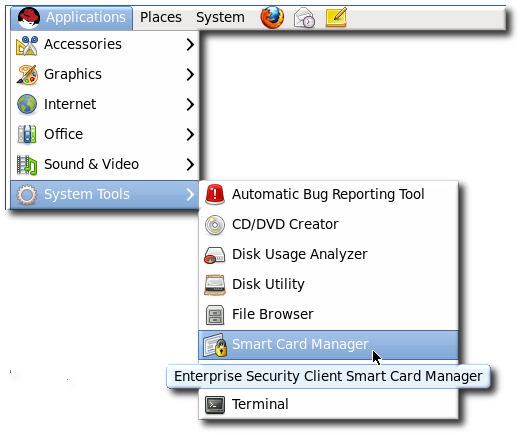
4.2. Overview of Enterprise Security Client Configuration
- A local interface, based on XUL and JavaScript
- A web-hosted interface which can be used for remote access, based on CGIs, HTML, and JavaScript
- A wide UI widget set and greater control over the presentation.
- Local markup to the client machine, so it has a greater privilege level than HTML.
- JavaScript as the scripting language for convenient program logic scripting and the ability to leverage XPCOM technology.
4.2.1. Enterprise Security Client File Locations
/usr/lib/esc-1.1.0/esc. On Red Hat Enterprise Linux 64-bit systems, the installation directory is /usr/lib64/esc-1.1.0/esc.
NOTE
Table 4.1. Enterprise Security Client File and Directory Locations
| File or Directory | Purpose |
|---|---|
| application.ini | XULRunner application configuration file. |
| components/ | XPCOM components. |
| chrome/ | Directory for Chrome components and additional application files for Enterprise Security Client XUL and JavaScript. |
| defaults/ | Enterprise Security Client default preferences. |
| esc | The script which launches the Enterprise Security Client. |
4.2.2. About the Preferences Configuration Files
esc-prefs.js, which is installed with Enterprise Security Client. The second one is prefs.js in the Mozilla profiles directory, which is created when the Enterprise Security Client is first launched.
/usr/lib/esc-1.1.0/defaults/preferences/esc-prefs.js. On Red Hat Enterprise Linux 64-bit, this is in /usr/lib64/esc-1.1.0/defaults/preferences/esc-prefs.js.
esc-prefs.js file specifies the
default configuration to use when the Enterprise Security Client is
first launched. This includes parameters to connect to the TPS
subsystem, set the password prompt, and configure Phone Home
information. Each setting is prefaced by the word pref, then the parameter and value are enclosed in parentheses. For example:
pref(parameter,value);
esc-prefs.js file parameters are listed in Table 4.2, “esc-prefs.js Parameters”. The default esc-prefs.js file is shown in Example 4.1, “Default esc-prefs.js File”.
Table 4.2. esc-prefs.js Parameters
| Parameter | Description | Notes and Defaults |
|---|---|---|
| toolkit.defaultChromeURI | Defines the URL for the Enterprise Security Client to use to contact the XUL Chrome page. | ("toolkit.defaultChromeURI", "chrome://esc/content/settings.xul") |
| esc.tps.message.timeout | Sets a timeout period, in seconds, for connecting to the TPS. | ("esc.tps.message.timeout","90"); |
| esc.disable.password.prompt |
Enables the password prompt, which means that a password is
required to read the certificate information off the smart card.
The password prompt is disabled by default, so anyone can use
the Enterprise Security Client. However, in security contexts, like when
a company uses security officers to manage token operations, then this
should be enabled, to restrict access to the Enterprise Security Client.
|
("esc.disable.password.prompt","yes");
|
| esc.global.phone.home.url |
Sets the URL to use to contact the TPS server.
Normally, the Phone Home information is set on the token
already through its applet. If a token does not have Phone Home
information, meaning it has no way to contact the TPS server, then the
Enterprise Security Client checks for a global default Phone Home URL.
This setting is only checked if it is explicitly set. This
setting also applies to every token formatted through the client, so
setting this parameter forces all tokens to point to the same TPS. Only
use this parameter if that specific behavior is desired.
|
("esc.global.phone.home.url", "http://server.example.com:7888/cgi-bin/home/index.cgi");
|
| esc.global.alt.nss.db |
Points to a directory that contains a common security database
that is used by all Enterprise Security Client users on the server.
Phone Home URL.
This setting is only checked if it is explicitly set. If this
is not set, then each user accesses only each individual profile
security database, rather than a shared database.
|
prefs("esc.global.alt.nss.db", "C:/Documents and Settings/All Users/shared-db");
|
Example 4.1. Default esc-prefs.js File
#pref("toolkit.defaultChromeURI", "chrome://esc/content/settings.xul"); pref("signed.applets.codebase_principal_support",true); for internal use only pref("capability.principal.codebase.p0.granted", "UniversalXPConnect"); for internal use only pref("capability.principal.codebase.p0.id", "file://"); for internal use only pref("esc.tps.message.timeout","90"); #Do we populate CAPI certs on windows? pref("esc.windows.do.capi","yes"); #Sample Security Officer Enrollment UI #pref("esc.security.url","http://test.host.com:7888/cgi-bin/so/enroll.cgi"); #Sample Security Officer Workstation UI #pref("esc.security.url","https://dhcp-170.sjc.redhat.com:7889/cgi-bin/sow/welcome.cgi"); #Hide the format button or not. pref("esc.hide.format","no"); #Use this if you absolutely want a global phone home url for all tokens #Not recommended! #pref("esc.global.phone.home.url","http:/test.host.com:7888/cgi-bin/home/index.cgi");
~/.redhat/esc/alphanumeric_string.default/prefs.js in Red Hat Enterprise Linux 6.0.
NOTE
prefs.js file. Editing this file is tricky. The prefs.js
file is generated and edited dynamically by the Enterprise Security
Client, and manual changes to this file are overwritten when the
Enterprise Security Client exits.
Table 4.3. prefs.js Parameters
| Parameter | Description | Notes and Defaults |
|---|---|---|
| esc.tps.url | Sets a URL for the Enterprise Security Client to use to connect to the TPS. This is not set by default. | |
esc.key.token_ID.tps.url
|
Sets the hostname and port to use to contact a TPS.
If this Phone Home information was not burned into the card at
the factory, it can be manually added to the card by adding the TPS URL,
an enrollment page URL, the issuer's name, and Phone Home URL.
|
("esc.key.token_ID.tps.url" = "http://server.example.com:7888/nk_service");
|
| esc.key.token_ID.tps.enrollment-ui.url |
Gives the URL to contact the enrollment page for enroll certificates on the token.
If this Phone Home information was not burned into the card at
the factory, it can be manually added to the card by adding the TPS URL,
an enrollment page URL, the issuer's name, and Phone Home URL.
| ("esc.key.token_ID.tps.enrollment-ui.url" = "http://server.example.com:7888/cgi_bin/esc.cgi?"); |
| esc.key.token_ID.issuer.name |
Gives the name of the organization enrolling the token.
| ("esc.key.token_ID.issuer.name" = "Example Corp"); |
| esc.key.token_ID.phone.home.url |
Gives the URL to use to contact the Phone Home functionality for the TPS.
The global Phone Home parameter sets a default to use with any
token enrollment, if the token does not specify the Phone Home
information. By setting this parameter to a specific token ID number,
the specified Phone Home parameter applies only to that token.
| ("esc.key.token_ID.phone.home.url" = "http://server.example.com:7888/cgi-bin/home/index.cgi?"); |
| esc.security.url |
Points to the URL to use for security officer mode.
If this is pointed to the security officer enrollment form,
then the Enterprise Security Client opens the forms to enroll security
officer tokens. If this is pointed to the security officer workstation
URL, then it opens the workstation to enroll regular users with security
officer approval.
|
("esc.security.url","https://server.example.com:7888/cgi-bin/so/enroll.cgi");
|
4.2.3. About the XUL and JavaScript Files in the Enterprise Security Client
/usr/lib[64]/esc-1.1.0/chrome/content/esc/.
Table 4.4. Main XUL Files
| Filename | Purpose |
|---|---|
| settings.xul | Contains the code for the Settings page. |
| esc.xul | Contains the code for the Enrollment page. |
| config.xul | Contains the code for the configuration UI. |
Table 4.5. Main JavaScript Files
| Filename | Purpose |
|---|---|
| ESC.js | Contains most of the Smart Card Manager JavaScript functionality. |
| TRAY.js | Contains the tray icon functionality. |
| AdvancedInfo.js | Contains the code for the Diagnostics feature. |
| GenericAuth.js | Contains the code for the authentication prompt. This prompt is configurable from the TPS server, which requires dynamic processing by the Smart Card Manager. |
4.3. Configuring Phone Home
NOTE
op.format.userKey.issuerinfo.enable=true op.format.userKey.issuerinfo.value=http://server.example.com
4.3.1. About Phone Home Profiles
4.3.2. Setting Global Phone Home Information
esc-prefs.js, has a parameter which allows a global Phone Home URL default to be set. This parameter is esc.global.phone.home.url and is not in the file by default.
- Remove any existing Enterprise Security Client user profile directory. Profile directories are created automatically when a smart card is inserted. By default, the profile directory is
~/.redhat/esc. - Open the
esc-prefs.jsfile.On Red Hat Enterprise Linux 6.0, the profile directory is/usr/lib/esc-1.1.0/defaults/preferences. On 64-bit systems, this is/usr/lib64/esc-1.1.0/defaults/preferences. - Add the global Phone Home parameter line to the
esc-prefs.jsfile. For example:pref("esc.global.phone.home.url","http://server.example.com:7888/cgi-bin/home/index.cgi");The URL can reference a machine name, a fully-qualified domain name, or an IPv4 or IPv6 address, depending on the DNS and network configuration.
esc-prefs.js file for the esc.global.phone.home.url parameter.
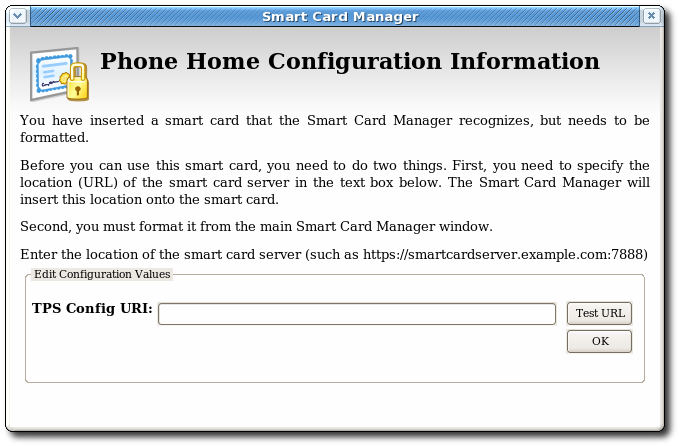
Figure 4.1. Prompt for Phone Home Information
4.3.3. Adding Phone Home Information to a Token Manually
- The preferred method is that the information is burned onto the token at the factory. When the tokens are ordered from the manufacturer, the company should also supply detailed information on how the tokens should be configured when shipped.
- If tokens are blank, the company IT department can supply the information when formatting small groups of tokens.
~/.redhat/esc/alphanumeric_string.default/prefs.js file:
- The TPS server and port. For example:
"esc.key.
token_ID.tps.url" = "http://server.example.com:7888/nk_service" - The TPS enrollment interface URL. For example:
"esc.key.
token_ID.tps.enrollment-ui.url" = "http://server.example.com:7888/cgi_bin/esc.cgi?" - The issuing company name or ID. For example:
"esc.key.
token_ID.issuer.name" = "Example Corp" - The Phone Home URL. For example:
"esc.key.
token_ID.phone.home.url" = "http://server.example.com:7888/cgi-bin/home/index.cgi?" - Optionally, a default browser URL to access when an enrolled smart card is inserted.
"esc.key.
token_ID.EnrolledTokenBrowserURL" = "http://www.test.example.com"
prefs.js file are listed in Table 4.3, “prefs.js Parameters”.
NOTE
4.3.4. Configuring the TPS to Use Phone Home
index.cgi in the /var/lib/pki-tps/cgi-bin/home directory; this prints the Phone Home information to XML.
Example 4.2. TPS Phone Home Configuration File
<ServiceInfo><IssuerName>Example Corp</IssuerName>
<Services>
<Operation>http://server.example.com:7888/nk_service ## TPS server URL
</Operation>
<UI>http://server.example.com:7888/cgi_bin/esc.cgi ## Optional
Enrollment UI
</UI>
<EnrolledTokenBrowserURL>http://www.test.url.com ## Optional
enrolled token url
</EnrolledTokenBrowserURL>
</Services>
</ServiceInfo>http://server.example.com:7888/cgi-bin/home/index.cgi;
the URL can reference the machine name, fully-qualified domain name, or
an IPv4 or IPv6 address, as appropriate. When the TPS configuration URI
is accessed, the TPS server is prompted to return all of the Phone Home
information to the Enterprise Security Client.
4.4. Using Security Officer Mode
- The ability to search for an individual within an organization.
- An interface that displays a photo and other pertinent information about an individual.
- The ability to enroll approved individuals.
- Formatting or resetting a user's card.
- Formatting or resetting a security officer's card.
- Enrolling a temporary card for a user that has misplaced their primary card.
- Storing TPS server information on a card. This Phone Home information is used by the Enterprise Security Client to contact a given TPS server installation.
- Creating and managing security officers.
- Managing regular users by security officers.
TIP
4.4.1. Enabling Security Officer Mode
esc-prefs.js file.
- Add the security officer user entry to the TPS database as a member of the TUS Officers group.
TIP
It can be simpler to add and copy user entries in the LDAP database using the Red Hat Directory Server Console. Using the Directory Server Console is described more in the Red Hat Directory Server Administrators Guide in section 3.1.2, "Creating Directory Entries."There are two subtrees associated with the TPS. One is for external users, which has a distinguished name (DN) likedc=server,dc=example,dc=com; this directory is used to authenticate any user attempting to enroll a smart card. The other database is used for internal TPS instance entries, including TPS agents, administrators, and security officers. This subtree has a DN likedc=server.example.com-pki-tps. The TUS Officers group entry is under thedc=server.example.com-pki-tpssuffix.Any security officer entry has to be a child entry of the TUS Officers group entry. This means that the group entry is the main entry, and the user entry is directly beneath it in the directory tree.The TUS Officers group entry iscn=TUS Officers,ou=Groups,dc=server.example.com-pki-tps.For example, to add the security officer entry usingldapmodify:/usr/lib/mozldap/ldapmodify -a -D "cn=Directory Manager" -w secret -p 389 -h server.example.com dn:
uid=jsmith,cn=TUS Officers,ou=Groups, dc=server.example.com-pki-tps objectclass: inetorgperson objectclass: organizationalPerson objectclass: person objectclass: top sn: smith uid: jsmith cn: John Smith mail: jsmith@example.com userPassword: secretPress the Enter key twice to send the entry, or use Ctrl+D. - Check the TPS's security officer workstation to make sure it is pointing to the external user subtree DN to authenticate users who will enroll smart cards.
vim /var/lib/pki-tps/cgi-bin/sow/cfg.pl # # Feel free to modify the following parameters: # my $ldapHost = "localhost"; my $ldapPort = "389"; my $basedn = "
ou=People,dc=server, dc=example,dc=com"; my $port = "7888"; my $secure_port = "7889"; my $host = "localhost";
- First, trust the CA certificate chain.
- Open the CA's end-entities page.
http
s://server.example.com:9444/ca/ee/ca/ - Click the Retrieval tab, and download the CA certificate chain.
- Open the Enterprise Security Client.
esc
- Click the View Certificates button.
- Click the Authorities tab.
- Click the button, and import the CA certificate chain.
- Set the trust settings for the CA certificate chain.
- Then, format and enroll the security officer's token. This token is used to access the security officer Enterprise Security Client UI.
- Insert a blank token.
- When the prompt for the Phone Home information opens, enter the security officer URL.
/var/lib/pki-tps/cgi-bin/so/index.cgi
- Click the button to format the security officer's token.
- Close the interface and stop the Enterprise Security Client.
- Add two parameters in the
esc-prefs.jsfile. The first,esc.disable.password.prompt, sets security officer mode. The second,esc.security.url, points to the security officer enrollment page. Just the presence of theesc.security.urlparameter instructs the Enterprise Security Client to open in security officer mode next time it opens.pref("esc.disable.password.prompt","no"); pref("esc.security.url","https://server.example.com:7888/cgi-bin/so/enroll.cgi"); - Start the Enterprise Security Client again, and open the UI.
esc
- The Enterprise Security Client is configured to connect to the security officer enrollment form in order to enroll the new security officer's token. Enroll the token as described in Section 4.4.2, “Enrolling a New Security Officer”.
- Close the interface and stop the Enterprise Security Client.
- Edit the
esc-prefs.jsfile again, and this time change theesc.security.urlparameter to point to the security officer workstation page.pref("esc.security.url","https://server.example.com:7889/cgi-bin/sow/welcome.cgi"); - Restart the Enterprise Security Client again. The UI now points to the security officer workstation to allow security officers to enroll tokens for regular users.
escd process, and comment out the esc.securty.url and esc.disable.password.prompt lines in the esc-prefs.js file. When the esc process is restarted, it starts in normal mode.
4.4.2. Enrolling a New Security Officer
- Make sure the
escprocess is running.esc
Then open the Enterprise Security Client UI. With security officer mode enabled in the
With security officer mode enabled in theesc-pref.jsfile (Section 4.4.1, “Enabling Security Officer Mode”) the security officer enrollment page opens. - In the Security Officer Enrollment window, enter the LDAP user name and password of the new security officer and a password that will be used with the security officer's smart card.
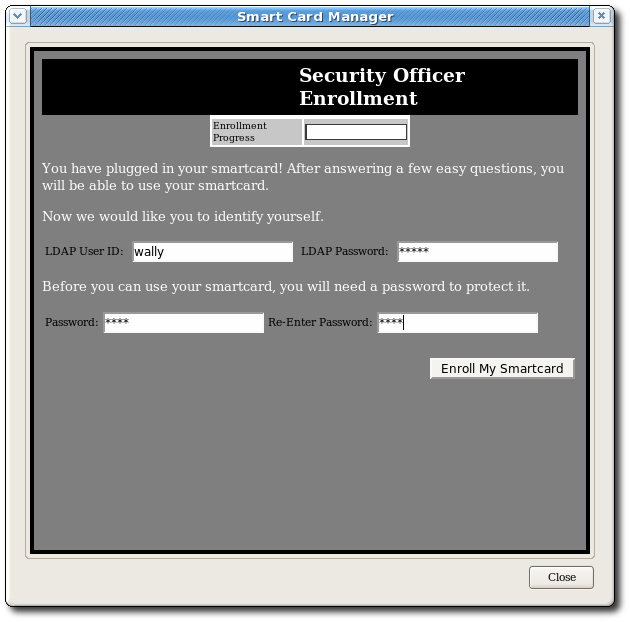
- Click .
4.4.3. Using Security Officers to Manage Users
4.4.3.1. Enrolling a New User
- Make sure the
escprocess is running. If necessary, start the process.esc
Also, make sure that security officer mode is enabled, as described in Section 4.4.1, “Enabling Security Officer Mode”. - Then open the Enterprise Security Client UI.
NOTE
Ensure that there is a valid and enrolled security officer card plugged into the computer. A security officer's credentials are required to access the following pages.
- Click to display the security officer Station page. The client may prompt for the password for the security officer's card (which is required for SSL client authentication) or to select the security officer's signing certificate from the drop-down menu.
- Click the link to display the Security Officer Select User page.

- Enter the LDAP name of the user who is to receive a new smart card.
- Click . If the user exists, the Security Officer Confirm User page opens.
- Compare the information returned in the Enterprise Security Client UI to the person or credentials that are present.
- If all the details are correct, click to display the Security Officer Enroll User page. This page prompts the officer to insert a new smart card into the computer.
- If the smart card is properly recognized, enter the new password for this card and click .
4.4.3.2. Performing Other Security Officer Tasks
- Make sure the
escprocess is running. If necessary, start the process.esc
Also, make sure that security officer mode is enabled, as described in Section 4.4.1, “Enabling Security Officer Mode”. - Then open the Enterprise Security Client UI.
NOTE
Ensure that there is a valid and enrolled security officer card plugged into the computer. A security officer's credentials are required to access the following pages.
- Click to display the security officer Station page. You may be prompted to enter the password for the security officer's card. This is required for SSL client authentication.
- Select the operation from the menu (enrolling a temporary token, formatting the card, or setting the Phone Home URL).

- Continue the operation as described in Chapter 4, Using the Enterprise Security Client.
4.4.3.3. Formatting an Existing Security Officer Smart Card
IMPORTANT
- Click . Because the security officer card is already inserted, the following screen displays:
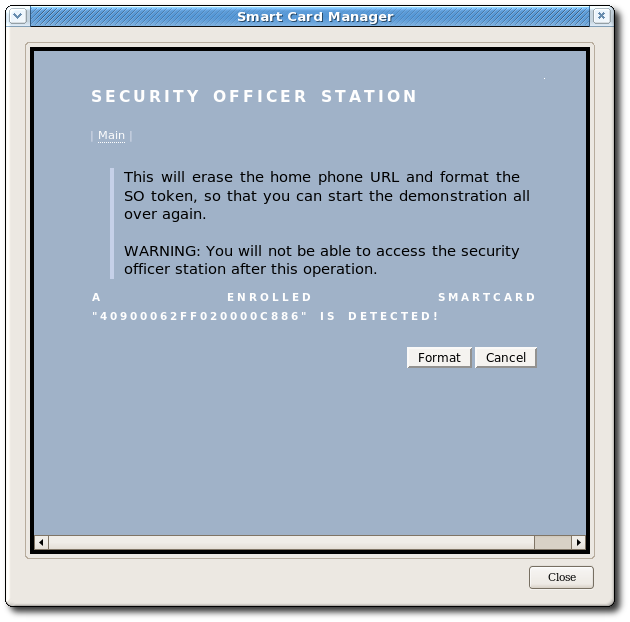
- Click to begin the operation.
4.5. Configuring SSL Connections with the TPS
- The Enterprise Security Client has to have the CA certificate for the CA which issued the TPS's certificates in order to trust the TPS connection. Import the CA certificate as described in Section 5.4.4, “Importing CA Certificates”.
- The Enterprise Security Client needs to be configured to communicate with the TPS over SSL; this is done by setting the Phone Home URL, which is the default URL the Enterprise Security Client uses to connect to the TPS.
- Open the Enterprise Security Client.

- Insert a new, blank token into the machine.Blank tokens are unformatted, so they do not have an existing Phone Home URL, and the URL must be set manually. Formatted tokens (tokens can be formatted by the manufacturer or by your IT department) already have the URL set, and thus do not prompt to set the Phone Home URL.
- Fill in the new TPS URL with the SSL port information. For example:
http
s://server.example.com:7890/cgi-bin/home/index.cgi - Click the button to send a message to the TPS.
- If the request is successful, the client opens a dialog box saying that the Phone Home URL was successfully obtained.
4.6. Customizing the Smart Card Enrollment User Interface
/var/lib/pki-tps/cgi-bin/home/Enroll.htmlfor regular enrollments/var/lib/pki-tps/cgi-bin/so/Enroll.htmlfor security officer enrollments/var/lib/pki-tps/cgi-bin/sow/Enroll.htmlfor security officer workstation enrollments (users enrolled through the security officer UI)NOTE
The security officer workstation directory contains other HTML files for other token operations, such as formats and PIN resets.
docroot/ directory, such as /var/lib/pki-tps/docroot/esc/sow for the security officer enrollment file in /var/lib/pki-tps/cgi-bin/sow.
Example 4.3. Changing Page Text
<!-- Change the title if desired --> <title>Enrollment</title> ... <p class="headerText">Smartcard Enrollment</p> ... <!-- Insert customized descriptive text here. --> <p class="bodyText">You have plugged in your smart card!After answering a few easy questions, you will be able to use your smart card.</p> <p class="bodyText">Now we would like you to identify yourself.</p> ... <table> <tr> <td><p >LDAP User ID:</p></td> <td> </td> <td><input type="text" id="snametf" value=""></td> </tr> </table>
style.css CSS style sheet and the logo image, logo.png.
Example 4.4. Changing Page Styles
<link rel=stylesheethref="/esc/home/style.css"type="text/css"> ... <table width="100%" class="logobar"> <tr> <td> <img alt=""src="/home/logo.jpg"> </td> <td> <p class="headerText">Smartcard Enrollment</p> </td> </tr> </table>
style.css file is a standard CSS file, so all of the tags and classes can be defined as follows:
body {
background-color: grey;
font-family: arial;
font-size: 7p
}Enroll.html
files is through the JavaScript file which sets the page functionality.
This file controls features like the progress meter, as well as
processing the inputs which are used to authenticate the user to the
user directory.
Example 4.5. Changing Page Script
<progressmeter id="progress-id" hidden="true" align = "center"/> ... <table> <tr> <td><p >LDAP User ID: </p></td> <td> </td> <td><input type="text"id="snametf"value=""></td> </tr> </table>
WARNING
util.js file. If this file is improperly edited, it can break the Enterprise Security Client UI and prevent tokens from being enrolled.
/var/lib/pki-tps/cgi-bin/home/Enroll.html file is in Example 4.6, “Complete Enroll.html File”.
Example 4.6. Complete Enroll.html File
<html>
<head>
<meta http-equiv="Content-Type" content="text/html; charset=utf-8">
<link rel=stylesheet href="/esc/home/style.css" type="text/css">
<title>Enrollment</title>
</head>
<script type="text/JavaScript" src="/esc/home/util.js">
</script>
<body onload="InitializeBindingTable();" onunload=cleanup()>
<progressmeter id="progress-id" hidden="true" align = "center"/>
<table width="100%" class="logobar">
<tr>
<td>
<img alt="" src="/home/logo.jpg">
</td>
<td>
<p class="headerText">Smartcard Enrollment</p>p
</td>
</tr>
</table>
<table id="BindingTable" width="200px"align="center">
<tr id="HeaderRow">
</tr>
</table>
<p class="bodyText">You have plugged in your smart card! After answering a few easy questions, you will be able to use your smart card.
</p>p
<p class="bodyText">
Now we would like you to identify yourself.
</p>p
<table>
<tr>
<td><p >LDAP User ID: </p>p</td>
<td> </td>
<td><input type="text" id="snametf" value=""></td>
<td> </td>
<td><p>LDAP Password: </p>p</td>
<td> </td>
<td><input type="password" id="snamepwd" value=""></td>
</tr>
</table>
<p class="bodyText"> Before you can use your smart card, you will need a password to protect it.</p>p
<table>
<tr>
<td><p >Password:</p>p</td>
<td><input type="password" id="pintf" name="pintf" value=""></td>
<td><p >Re-Enter Password:</p>p</td>
<td><input type="password" id="reenterpintf" name="reenterpintf" value=""></td>
</table>
<br>
<table width="100%">
<tr>
<td align="right">
<input type="button" id="enrollbtn" name="enrollbtn" value="Enroll My Smartcard" onClick="DoEnrollCOOLKey();">
</td>
</tr>
</table>
</body></html>4.7. Disabling LDAP Authentication for Token Operations
- Stop the TPS subsystem.
service pki-tps stop
- Set the authentication parameters to
false.op.
operation_type.token_type.loginRequest.enable=false op.operation_type.token_type.auth.enable=falseThe operation_type is the token operation for which LDAP authentication is being disabled, such asenroll,format, orpinreset. Disabling authentication for one operation type does not disable it for any other operation types.The token_type is the token profile. There are default profiles for regular users, security officers, and the users enrolled by security officers. There can also be custom token types for other kinds of users or certificates.For example:op.
enroll.userKey.loginRequest.enable=false op.enroll.userKey.pinReset.enable=false - Restart the TPS subsystem.
service pki-tps start
Chapter 5. Using Smart Cards with the Enterprise Security Client
5.1. Supported Smart Cards
- Safenet 330J Java smart cards
- Gemalto 64K V2 tokens, both as a smart card and GemPCKey USB form factor key
5.2. Setting up Users to Be Enrolled
CS.cfg:
auth.instance.0.baseDN=dc=example,dc=comauth.instance.0.hostport=server.example.com:389
/usr/bin/ldapmodify -a -D "cn=Directory Manager" -w secret-p 389 -h server.example.comdn: uid=jsmith,ou=People,dc=example,dc=comobjectclass: person objectclass: inetorgperson objectclass: top uid: jsmith cn: John Smith email: jsmith@example.com userPassword: secret
5.3. Enrolling a Smart Card Automatically
NOTE
- Ensure that the Enterprise Security Client is running.
- Insert an uninitialized smart card, pre-formatted with the Phone Home information for the TPS and the enrollment interface URL for the user's organization.The smart card can be added either by placing a USB form factor smart card into a free USB slot, or by inserting a standard, full-sized smart card into a smart card reader.When the system recognizes the smart card, it displays a message indicating it has detected an uninitialized smart card.
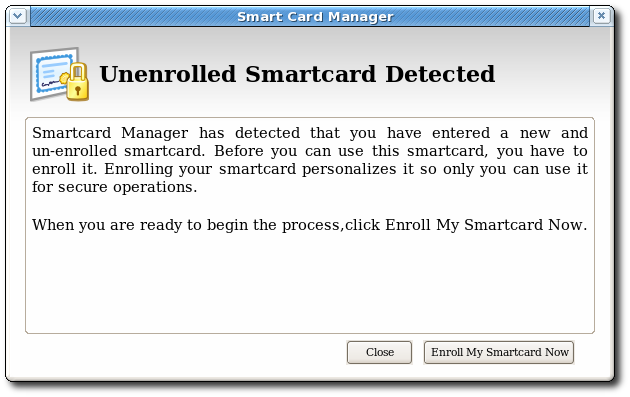
- Click to display the smart card enrollment form.
NOTE
If you remove the card at this point, a message displays stating that the smart card can no longer be detected. Reinsert the card to continue with the enrollment process.The enrollment files are accessed remotely; they reside on the TPS instance. If the network connection is bad or broken, then, an error may come up saying Check the Network Connection and Try Again. It is also possible that the enrollment window appears to open but the enrollment process does not proceed. The enrollment pages can be cached if the Enterprise Security Client previously connect to them successfully, so the enrollment UI opens even if the network is offline. Try restarting Enterprise Security Client and check the network connection. - Because the Smart Card Manager now knows where the enrollment UI is located (it is included in the Phone Home information), the enrollment form is displayed for the user to enter the required information.
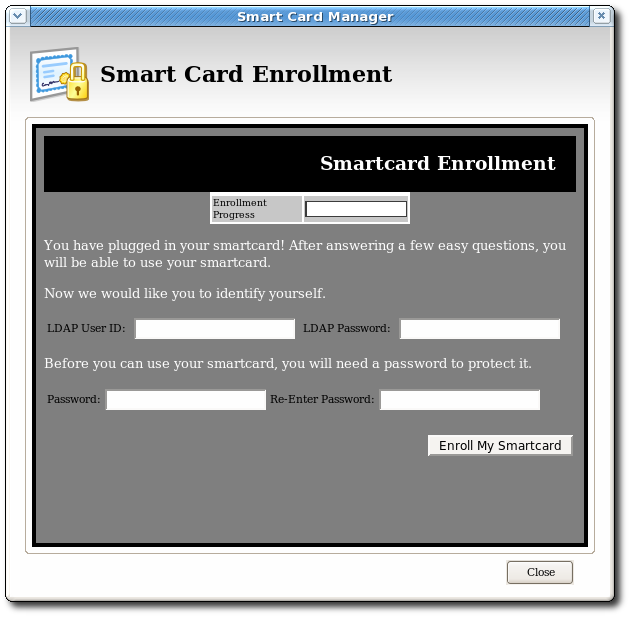 This illustration shows the default enrollment UI included with the TPS server. This UI is a standard HTML form, which you can customize to suit your own deployment requirements. This could include adding a company logo or adding and changing field text.See Section 4.6, “Customizing the Smart Card Enrollment User Interface” for information on customizing the UI.
This illustration shows the default enrollment UI included with the TPS server. This UI is a standard HTML form, which you can customize to suit your own deployment requirements. This could include adding a company logo or adding and changing field text.See Section 4.6, “Customizing the Smart Card Enrollment User Interface” for information on customizing the UI. - The sample enrollment UI requires the following information for the TPS server to process the smart card enrollment operation:
- LDAP User ID. This is the LDAP user ID of the user enrolling the smart card; this can also be a screen name or employee or customer ID number.
- LDAP Password. This is the password corresponding to the user ID entered; this can be a simple password or a customer number.
NOTE
The LDAP user ID and password are related to the Directory Server user. The TPS server is usually associated with a Directory Server, which stores user information and through which the TPS authenticates users.Passwords must conform to the password policy configured in the Directory Server. - Password and Re-Enter Password. These fields set and confirm the smart card's password, used to protect the card information.
- After you have entered all required information, click Enroll My Smart Card to submit the information and enroll the card.
- When the enrollment process is complete, a message page opens which shows that the card was successfully enrolled and can offer custom instructions on using the newly-enrolled smart card.

5.4. Managing Smart Cards
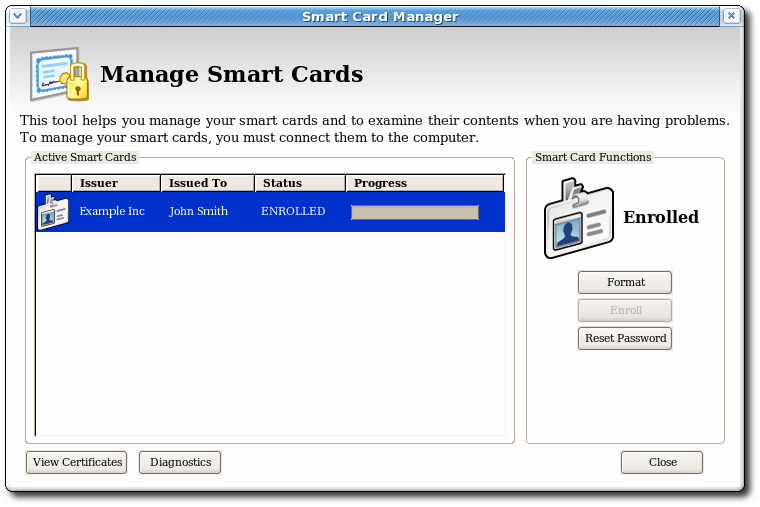
Figure 5.1. Manage Smart Cards Page
5.4.1. Formatting the Smart Card
- Insert a supported smart card into the computer. Ensure that the card is listed in the Active Smart Cards table.
- In the Smart Card Functions section of the Manage Smart Cards screen, click .
- If the TPS has been configured for user authentication, enter the user credentials in the authentication dialog, and click .
- During the formatting process, the status of the card changes to BUSY and a progress bar is displayed. A success message is displayed when the formatting process is complete. Click to close the message box.
- When the formatting process is complete, the Active Smart Cards table shows the card status as UNINITIALIZED.
5.4.2. Resetting a Smart Card Password
- Insert a supported smart card into the computer. Ensure that the card is listed in the Active Smart Cards table.
- In the Smart Card Functions section of the Manage Smart Cards screen, click to display the Password dialog.
- Enter a new smart card password in the Enter new password field.
- Confirm the new smart card password in the Re-Enter password field, and then click .
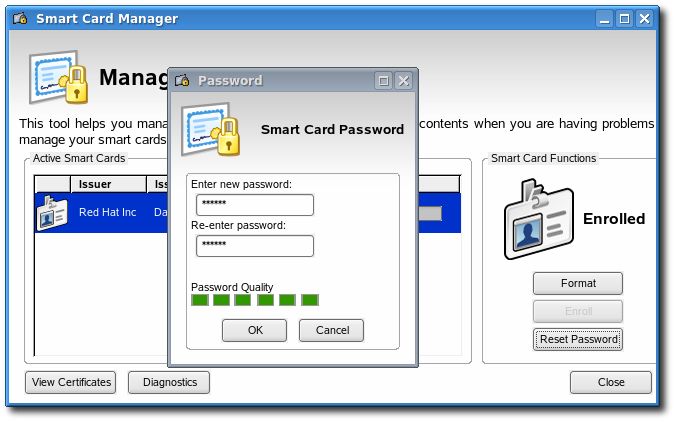
- If the TPS has been configured for user authentication, enter the user credentials in the authentication dialog, and click .
- Wait for the password to finish being reset.
5.4.3. Viewing Certificates
- Insert a supported smart card into the computer. Ensure that the card is listed in the Active Smart Cards table.
- Select the card from the list, and click .
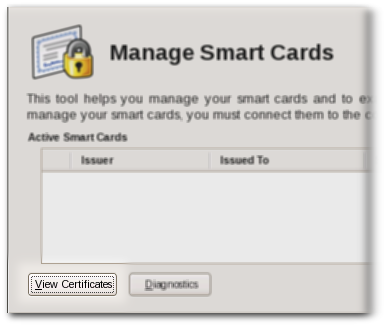 This displays basic information about the certificates stored on the card, including the serial number, certificate nickname, and validity dates.
This displays basic information about the certificates stored on the card, including the serial number, certificate nickname, and validity dates. - To view more detailed information about a certificate, select the certificate from the list and click .
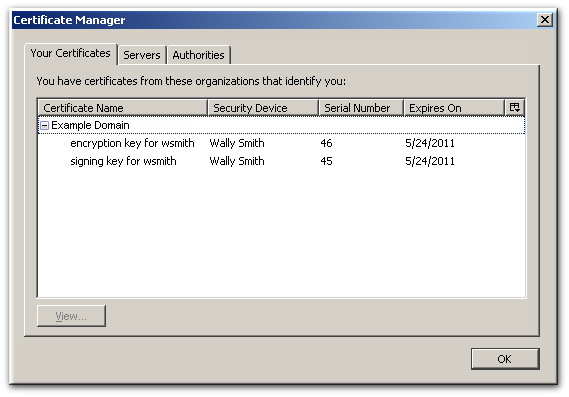
5.4.4. Importing CA Certificates
- Open the CA's end user pages in a web browser.
http
s://server.example.com:9444/ca/ee/ca/ - Click the Retrieval tab at the top.
- In the left menu, click the Import CA Certificate Chain link.
- Choose the radio button to download the chain as a file, and remember the location and name of the downloaded file.
- Open the Enterprise Security Client.

- Click the button.

- Click the Authorities tab.
- Click Import.
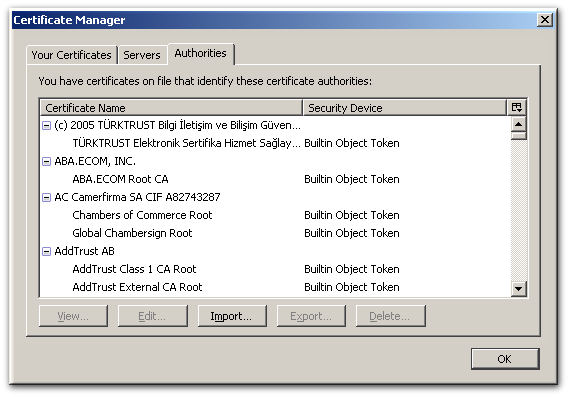
- Browse to the CA certificate chain file, and select it.
- When prompted, confirm that you want to trust the CA.
5.4.5. Adding Exceptions for Servers
- Open the Enterprise Security Client.

- Click the button.

- Click the Servers tab.
- Click Add Exception.
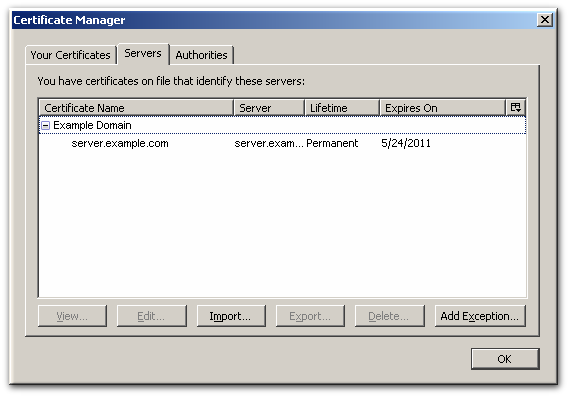
- Enter the URL, including any port numbers, for the site or service which the smart card will be used to access. Then click the button to download the server certificate for the site.
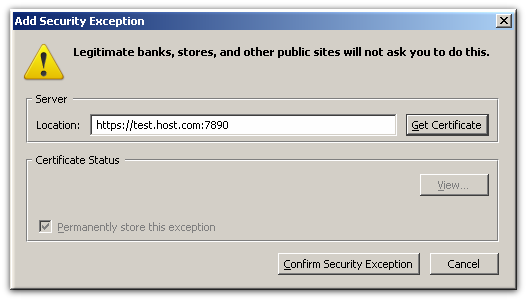
- Click to add the site to the list of allowed sites.
5.4.6. Enrolling Smart Cards
NOTE
- Insert a supported, unenrolled smart card into the computer. Ensure that the card is listed in the Active Smart Cards table.
- Click to display the Password dialog.
- Enter a new key password in the Enter a password field.Confirm the new password in the Re-Enter a password field.
- Click to begin the enrollment.
- If the TPS has been configured for user authentication, enter the user credentials in the authentication dialog, and click .If the TPS has been configured to archive keys to the DRM, the enrollment process will begin generating and archiving keys.
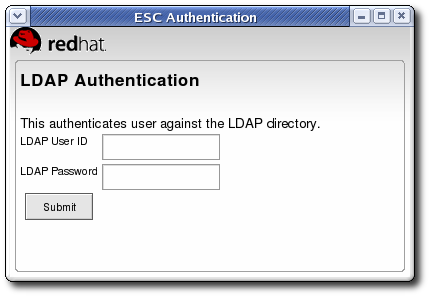
5.4.7. Re-Enrolling Tokens
5.5. Diagnosing Problems
- Open the Enterprise Security Client.

- Select the smart card to check from the list.
- Click the button.
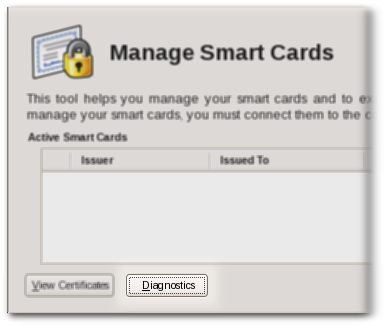
- This opens the window for the selected smart card.
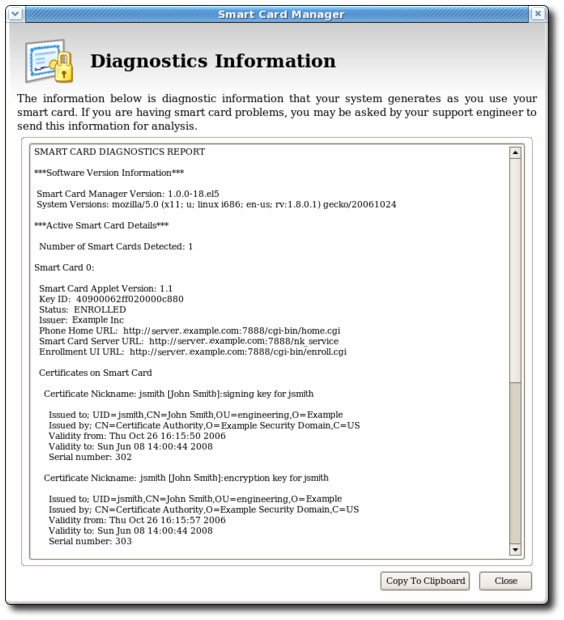
- The Enterprise Security Client version number.
- The version information for the Xulrunner framework upon which the client is running.
- The number of cards detected by the Enterprise Security Client.
- The version of the applet running on the smart card.
- The alpha-numeric ID of the smart card.
- The card's status, which can be any of the three things:
- NO_APPLET No key was detected.
- UNINITIALIZED. The key was detected, but no certificates have been enrolled.
- ENROLLED. The detected card has been enrolled with certificate and card information.
- The card's Phone Home URL. This is the URL from which all Phone Home information is obtained.
- The card issuer name, such as
Example Corp. - The card's answer-to-reset (ATR) string. This is a unique value that can be used to identify different classes of smart cards. For example:
3BEC00FF8131FE45A0000000563333304A330600A1
- The TPS Phone Home URL.
- The TPS server URL. This is retrieved through Phone Home.
- The TPS enrollment form URL. This is retrieved through Phone Home.
- Detailed information about each certificate contained on the card.
- A running log of the most recent Enterprise Security Client errors and common events.
5.5.1. Errors
- The Enterprise Security Client does not recognize a card.
- Problems occur during a smart card operation, such as a certificate enrollment, password reset, or format operation.
- The Enterprise Security Client loses the connection to the smart card. This can happen when problems occur communicating with the
PCSCdaemon. - The connection between the Enterprise Security Client and TPS is lost.
tps-debug.log or tps-error.log files, depending on the cause for the message.
Table 5.1. Smart Card Error Codes
| Return Code | Description |
|---|---|
| General Error Codes | |
| 6400 | No specific diagnosis |
| 6700 | Wrong length in Lc |
| 6982 | Security status not satisfied |
| 6985 | Conditions of use not satisfied |
| 6a86 | Incorrect P1 P2 |
| 6d00 | Invalid instruction |
| 6e00 | Invalid class |
| Install Load Errors | |
| 6581 | Memory Failure |
| 6a80 | Incorrect parameters in data field |
| 6a84 | Not enough memory space |
| 6a88 | Referenced data not found |
| Delete Errors | |
| 6200 | Application has been logically deleted |
| 6581 | Memory failure |
| 6985 | Referenced data cannot be deleted |
| 6a88 | Referenced data not found |
| 6a82 | Application not found |
| 6a80 | Incorrect values in command data |
| Get Data Errors | |
| 6a88 | Referenced data not found |
| Get Status Errors | |
| 6310 | More data available |
| 6a88 | Referenced data not found |
| 6a80 | Incorrect values in command data |
| Load Errors | |
| 6581 | Memory failure |
| 6a84 | Not enough memory space |
| 6a86 | Incorrect P1/P2 |
| 6985 | Conditions of use not satisfied |
5.5.2. Events
- Simple events such as card insertions and removals, successfully completed operations, card operations that result in an error, and similar events.
- Errors are reported from the TPS to the Enterprise Security Client.
- The NSS crypto library is initialized.
- Other low-level smart card events are detected.
Chapter 6. Configuring Applications for Single Sign-On
/usr/lib/libcoolkeypk11.so.
6.1. Configuring Firefox to Use Kerberos for Single Sign-On
- In the address bar of Firefox, type
about:configto display the list of current configuration options. - In the Filter field, type
negotiateto restrict the list of options. - Double-click the network.negotiate-auth.trusted-uris entry.
- Enter the name of the domain against which to authenticate.

- Next, configure the network.negotiate-auth.delegation-uris entry, using the same domain as for network.negotiate-auth.trusted-uris.
NOTE
kinit command and supply the user password for the user on the KDC.
[jsmith@host ~] $ kinit Password for jsmith@EXAMPLE.COM:
- Close all instances of Firefox.
- In a command prompt, export values for the
NSPR_LOG_*variables:export NSPR_LOG_MODULES=negotiateauth:5 export NSPR_LOG_FILE=/tmp/moz.log
- Restart Firefox from that shell, and visit the website where Kerberos authentication is failing.
- Check the
/tmp/moz.logfile for error messages with nsNegotiateAuth in the message.
- The first error says that no credentials have been found.
-1208550944[90039d0]: entering nsNegotiateAuth::GetNextToken() -1208550944[90039d0]: gss_init_sec_context() failed: Miscellaneous failure No credentials cache found
This means that there are no Kerberos tickets (meaning that they expired or were not generated). To fix this, runkinitto generate the Kerberos ticket and then open the website again. - The second potential error is if the browser is unable to contact the KDC, with the message Server not found in Kerberos database.
-1208994096[8d683d8]: entering nsAuthGSSAPI::GetNextToken() -1208994096[8d683d8]: gss_init_sec_context() failed: Miscellaneous failure Server not found in Kerberos database
This is usually a Kerberos configuration problem. The correct entries must be in the[domain_realm]section of the/etc/krb5.conffile to identify the domain. For example:.example.com = EXAMPLE.COM example.com = EXAMPLE.COM
- If there are no errors in the log, then the problem could be that an HTTP proxy server is stripping off the HTTP headers required for Kerberos authentication. Try to connect to the site using HTTPS, which allows the request to pass through unmodified.
6.2. Enabling Smart Card Login on Red Hat Enterprise Linux
NOTE
- nss-tools
- esc
- pam_pkcs11
- coolkey
- ccid
- gdm
- authconfig
- authconfig-gtk
- Log into the system as root.
- Download the root CA certificates for the network in base 64 format, and install them on the server. The certificates are installed in the appropriate system database using the
certutilcommand. For example:certutil -A -d /etc/pki/nssdb -n "root CA cert" -t "CT,C,C" -i /tmp/ca_cert.crt
- In the top menu, select the menu, select , and then click .
- Open the Authentication tab.
- Click the Enable Smart Card Support checkbox.
- When the button is active, click .There are two behaviors that can be configured for smart cards:
- The Require smart card for login checkbox requires smart cards and essentially disables Kerberos password authentication for logging into the system. This should not be selected until after you have successfully logged in using a smart card.
- The Card removal action menu sets the response that the system should take if the smart card is removed during an active session.
Ignoremeans that the system continues functioning as normal if the smart card is removed, whileLockimmediately locks the screen.
- By default, the mechanisms to check whether a certificate has been revoked (Online Certificate Status Protocol, or OCSP, responses) are disable. To validate whether a certificate has been revoked before its expiration period, enable OCSP checking by adding the
ocsp_onoption to thecert_policydirective.- Open the
pam_pkcs11.conffile.vim /etc/pam_pkcs11/pam_pkcs11.conf
- Change every
cert_policyline so that it contains theocsp_onoption.cert_policy =ca,
ocsp_on,signature;NOTE
Because of the way the file is parsed, there must be a space betweencert_policyand the equals sign. Otherwise, parsing the parameter fails.
- If the smart card has not yet been enrolled (set up with personal certificates and keys), enroll the smart card, as described in Section 5.3, “Enrolling a Smart Card Automatically”.
- If the smart card is a CAC card, the PAM modules used for smart card login must be configured to recognize the specific CAC card.
- As root, create a file called
/etc/pam_pkcs11/cn_map. - Add the following entry to the
cn_mapfile:MY.CAC_CN.123454->loginMY.CAC_CN.123454 is the common name on the CAC card and login is the Red Hat Enterprise Linux login ID.
TIP
pklogin_finder
tool (in debug mode) first maps the login ID to the certificates on the
card and then attempts to output information about the validity of
certificates.
pklogin_finder debug
6.3. Setting up Browsers to Support SSL for Tokens
- In Mozilla Firefox, open the menu, choose , and then click .
- Open the tab.
- Add a PKCS #11 driver.
- Click to open the Device Manager window, and then click the button.
- Enter a module name, such as
token key pk11 driver. - Click , find the Enterprise Security Client PKCS #11 driver, and click .
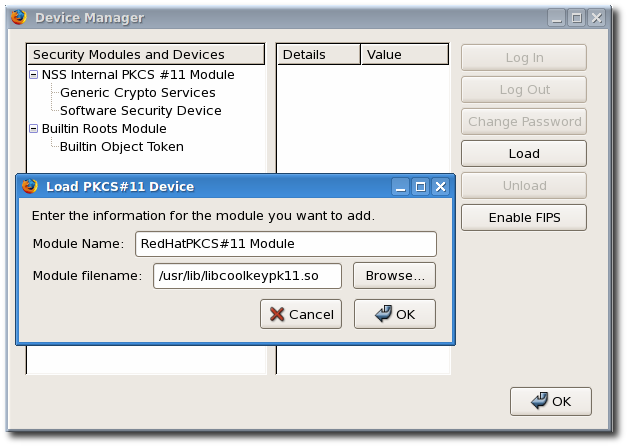
- If the CA is not yet trusted, download and import the CA certificate.
- Open the SSL End Entity page on the CA. For example:
http
s://server.example.com:9444/ca/ee/ca/ - Click the Retrieval tab, and then click Import CA Certificate Chain.
- Click Download the CA certificate chain in binary form and then click .
- Choose a suitable directory to save the certificate chain, and then click .
- Click , and select the Advanced tab.
- Click the button.
- Click , and import the CA certificate.
- Set the certificate trust relationships.
- Click , and select the Advanced tab.
- Click the button.
- Click , and set the trust for websites.
6.4. Using the Certificates on Tokens for Mail Clients
- In Mozilla Thunderbird, open the menu, choose , and then click .
- Open the tab.
- Add a PKCS #11 driver.
- Click to open the Device Manager window.
- Click the button.
- Enter the module name, such as
token keypk11 driver. - Click , find the Enterprise Security Client PKCS #11 driver, and click .
- If the CA is not yet trusted, download and import the CA certificate.
- Open the SSL End Entity page on the CA. For example:
http
s://server.example.com:9444/ca/ee/ca/ - Click the Retrieval tab, and then click Import CA Certificate Chain.
- Click Download the CA certificate chain in binary form and then click .
- Choose a suitable directory to save the certificate chain, and then click .
- In Mozilla Thunderbird, open the menu, choose , and then click .
- Open the tab, and click the button.
- Click the tab, and import the CA certificate.
- Set up the certificate trust relationships.
- In Mozilla Thunderbird, open the menu, choose , and then click .
- Open the tab, and click the button.
- In the Authorities tab, select the CA, and click the button.
- Set the trust settings for identifying websites and mail users.
- In the Digital Signing section of the Security panel, click to choose a certificate to use for signing messages.
- In the Encryption of the Security panel, click to choose the certificate to encrypt and decrypt messages.
Glossary
A
- access control
- The process of controlling what particular users are allowed to do. For example, access control to servers is typically based on an identity, established by a password or a certificate, and on rules regarding what that entity can do.
- administrator
- The person who installs and configures one or more Certificate System managers and sets up privileged users, or agents, for them.
- authentication
- Confident identification; assurance that a party to some computerized transaction is not an impostor. Authentication typically involves the use of a password, certificate, PIN, or other information to validate identity over a computer network.
See Also password-based authentication, certificate-based authentication, client authentication, server authentication.
- authentication module
- A set of rules (implemented as a Java™ class) for authenticating an end entity, agent, administrator, or any other entity that needs to interact with a Certificate System subsystem. In the case of typical end-user enrollment, after the user has supplied the information requested by the enrollment form, the enrollment servlet uses an authentication module associated with that form to validate the information and authenticate the user's identity.
See Also servlet.
- authentication server
- A server that issues tickets for a desired service which are in turn given to users for access to the service. The AS responds to requests from clients who do not have or do not send credentials with a request. It is usually used to gain access to the ticket-granting server (TGS) service by issuing a ticket-granting ticket (TGT). The AS usually runs on the same host as the key distribution center (KDC).
- authorization
- Permission to access a resource controlled by a server. Authorization typically takes place after the ACLs associated with a resource have been evaluated by a server.
- automated enrollment
- A way of configuring a Certificate System subsystem that allows automatic authentication for end-entity enrollment, without human intervention. With this form of authentication, a certificate request that completes authentication module processing successfully is automatically approved for profile processing and certificate issuance.
B
- bind DN
- A user ID, in the form of a distinguished name (DN), used with a password to authenticate to Red Hat Directory Server.
C
- CA certificate
- A certificate that identifies a certificate authority.
See Also certificate authority (CA), root CA.
- CA server key
- The SSL server key of the server providing a CA service.
- CA signing key
- The private key that corresponds to the public key in the CA certificate. A CA uses its signing key to sign certificates and CRLs.
- certificate
- Digital data, formatted according to the X.509 standard, that specifies the name of an individual, company, or other entity (the subject name of the certificate) and certifies that a public key, which is also included in the certificate, belongs to that entity. A certificate is issued and digitally signed by a certificate authority (CA). A certificate's validity can be verified by checking the CA's digital signature through public-key cryptography techniques. To be trusted within a public-key infrastructure (PKI), a certificate must be issued and signed by a CA that is trusted by other entities enrolled in the PKI.
- certificate authority (CA)
- A trusted entity that issues a certificate after verifying the identity of the person or entity the certificate is intended to identify. A CA also renews and revokes certificates and generates CRLs. The entity named in the issuer field of a certificate is always a CA. Certificate authorities can be independent third parties or a person or organization using certificate-issuing server software, such as Red Hat Certificate System.
- certificate chain
- A hierarchical series of certificates signed by successive certificate authorities. A CA certificate identifies a certificate authority (CA) and is used to sign certificates issued by that authority. A CA certificate can in turn be signed by the CA certificate of a parent CA, and so on up to a root CA. Certificate System allows any end entity to retrieve all the certificates in a certificate chain.
- Certificate Manager
- An independent Certificate System subsystem that acts as a certificate authority. A Certificate Manager instance issues, renews, and revokes certificates, which it can publish along with CRLs to an LDAP directory. It accepts requests from end entities.
See Also certificate authority (CA).
- certificate profile
- A set of configuration settings that defines a certain type of enrollment. The certificate profile sets policies for a particular type of enrollment along with an authentication method in a certificate profile.
- certificate revocation list (CRL)
- As defined by the X.509 standard, a list of revoked certificates by serial number, generated and signed by a certificate authority (CA).
- Certificate System subsystem
- One of the five Certificate System managers: Certificate Manager, Online Certificate Status Manager, Data Recovery Manager, Token Key Service, or Token Processing System.
- certificate-based authentication
- Authentication based on certificates and public-key cryptography.
See Also password-based authentication.
- cipher
- ciphertext
- Encrypted data.
- client
- An entity on the network (a user, a host, or an application) that can receive a ticket from Kerberos.
- client authentication
- The process of identifying a client to a server, such as with a name and password or with a certificate and some digitally signed data.
See Also certificate-based authentication, password-based authentication, server authentication.
- client SSL certificate
- A certificate used to identify a client to a server using the SSL protocol.
See Also Secure Sockets Layer (SSL).
- credential cache
- A file which contains the keys for encrypting communications between a user and various network services. Kerberos 5 supports a framework for using other cache types, such as shared memory, but files are more thoroughly supported.Also called a ticket file.
- credentials
- A temporary set of electronic credentials that verify the identity of a client for a particular service. Also called a ticket.
- CRL
- crypt hash
- A one-way hash used to authenticate users. These are more secure than using unencrypted data, but they are still relatively easy to decrypt for an experienced cracker.
- cryptographic algorithm
- A set of rules or directions used to perform cryptographic operations such as encryption and decryption.
- cryptographic module
See PKCS #11 module.
D
- Data Encryption Standard (DES)
- A FIPS-approved cryptographic algorithm required by FIPS 140-1 and specified by FIPS PUBS 46-2. DES, which uses 56-bit keys, is a standard encryption and decryption algorithm that has been used successfully throughout the world for more than 20 years. For detailed information, see http://www.itl.nist.gov/div897/pubs/fip46-2.htm
See Also FIPS PUBS 140-1.
- Data Recovery Manager
- An optional, independent Certificate System subsystem that manages the long-term archival and recovery of RSA encryption keys for end entities. A Certificate Manager can be configured to archive end entities' encryption keys with a Data Recovery Manager before issuing new certificates. The Data Recovery Manager is useful only if end entities are encrypting data, such as sensitive email, that the organization may need to recover someday. It can be used only with end entities that support dual key pairs: two separate key pairs, one for encryption and one for digital signatures.
- decryption
- Unscrambling data that has been encrypted.
See Also encryption.
- delta CRL
- A CRL containing a list of those certificates that have been revoked since the last full CRL was issued.
- digital signature
- To create a digital signature, the signing software first creates a one-way hash from the data to be signed, such as a newly issued certificate. The one-way hash is then encrypted with the private key of the signer. The resulting digital signature is unique for each piece of data signed. Even a single comma added to a message changes the digital signature for that message. Successful decryption of the digital signature with the signer's public key and comparison with another hash of the same data provides tamper detection. Verification of the certificate chain for the certificate containing the public key provides authentication of the signer.
See Also nonrepudiation, encryption.
- distinguished name (DN)
- A series of attribute-value assertions that, together, identify the subject of a certificate. This usually follows a hierarchy, moving from the name of the entity through its physical location and location in the organization.
- dual key pair
- Two public-private key pairs, four keys altogether, corresponding to two separate certificates. The private key of one pair is used for signing operations, and the public and private keys of the other pair are used for encryption and decryption operations. Each pair corresponds to a separate certificate.
See Also encryption key, public-key cryptography, signing key.
E
- encryption
- Scrambling information in a way that disguises its meaning.
See Also decryption.
- encryption key
- A private key used for encryption only. An encryption key and its equivalent public key, plus a signing key and its equivalent public key, constitute a dual key pair.
- enrollment
- The process of requesting and receiving an X.509 certificate for use in a public-key infrastructure (PKI). Also known as registration.
F
- FIPS PUBS 140-1
- Federal Information Standards Publications (FIPS PUBS) 140-1 is a US government standard for implementations of cryptographic modules, hardware or software that encrypts and decrypts data or performs other cryptographic operations, such as creating or verifying digital signatures. Many products sold to the US government must comply with one or more of the FIPS standards. See http://www.itl.nist.gov/div897/pubs/fip140-1.htm.
- firewall
- A system or combination of systems that enforces a boundary between two or more networks.
G
- GSS-API
- The Generic Security Service Application Program Interface (defined in RFC-2743 published by The Internet Engineering Task Force) is a set of functions which provide security services. This API is used by clients and services to authenticate to each other without either program having specific knowledge of the underlying mechanism. If a network service (such as cyrus-IMAP) uses GSS-API, it can authenticate using Kerberos.
H
- hash
- Also known as a hash value. A value generated by passing a string through a hash function. These values are typically used to ensure that transmitted data has not been tampered with.
- hash function
- A way of generating a digital "fingerprint" from input data. These functions rearrange, transpose or otherwise alter data to produce a hash value.
J
- JAR file
- A digital envelope for a compressed collection of files organized according to the Java™ archive (JAR) format.
- Java™ archive (JAR) format
- A set of conventions for associating digital signatures, installer scripts, and other information with files in a directory.
- Java™ Native Interface (JNI)
- A standard programming interface that provides binary compatibility across different implementations of the Java™ Virtual Machine (JVM) on a given platform, allowing existing code written in a language such as C or C++ for a single platform to bind to Java™. See http://java.sun.com/products/jdk/1.2/docs/guide/jni/index.html.
- Java™ Security Services (JSS)
- A Java™ interface for controlling security operations performed by Netscape Security Services (NSS).
K
- key
- A large number used by a cryptographic algorithm to encrypt or decrypt data. A person's public key, for example, allows other people to encrypt messages intended for that person. The messages must then be decrypted by using the corresponding private key.Encrypted data cannot be decrypted without the proper key or extremely good fortune on the part of the cracker.
- key distribution center
- A service that issues Kerberos tickets, and which usually run on the same host as the ticket-granting server (TGS). Abbreviated KDC.
- key exchange
- A procedure followed by a client and server to determine the symmetric keys they will both use during an SSL session.
- Key Exchange Algorithm (KEA)
- An algorithm used for key exchange by the US Government.
- keytab
- A file that includes an unencrypted list of principals and their keys. Servers retrieve the keys they need from keytab files instead of using
kinit. The default keytab file is/etc/krb5.keytab. The KDC administration server,/usr/kerberos/sbin/kadmind, is the only service that uses any other file (it uses/var/kerberos/krb5kdc/kadm5.keytab).Also called key table. - kinit
- The
kinitcommand allows a principal who has already logged in to obtain and cache the initial ticket-granting ticket (TGT). Refer to thekinitman page for more information.
L
- Lightweight Directory Access Protocol (LDAP)
- A directory service protocol designed to run over TCP/IP and across multiple platforms. LDAP is a simplified version of Directory Access Protocol (DAP), used to access X.500 directories. LDAP is under IETF change control and has evolved to meet Internet requirements.
M
- manual authentication
- A way of configuring a Certificate System subsystem that requires human approval of each certificate request. With this form of authentication, a servlet forwards a certificate request to a request queue after successful authentication module processing. An agent with appropriate privileges must then approve each request individually before profile processing and certificate issuance can proceed.
- MD5
- A message digest algorithm that was developed by Ronald Rivest.
See Also one-way hash.
N
- Network Security Services (NSS)
- A set of libraries designed to support cross-platform development of security-enabled communications applications. Applications built using the NSS libraries support the Secure Sockets Layer (SSL) protocol for authentication, tamper detection, and encryption, and the PKCS #11 protocol for cryptographic token interfaces. NSS is also available separately as a software development kit.
- nonrepudiation
- The inability by the sender of a message to deny having sent the message. A digital signature provides one form of nonrepudiation.
O
- object signing
- A method of file signing that allows software developers to sign Java code, JavaScript scripts, or any kind of file and allows users to identify the signers and control access by signed code to local system resources.
- OCSP
- Online Certificate Status Protocol.
- one-way hash
- 1. A number of fixed-length generated from data of arbitrary length with the aid of a hashing algorithm. The number, also called a message digest, is unique to the hashed data. Any change in the data, even deleting or altering a single character, results in a different value.2. The content of the hashed data cannot be deduced from the hash.
- operation
- The specific operation, such as read or write, that is being allowed or denied in an access control instruction.
- output
- In the context of the certificate profile feature, it defines the resulting form from a successful certificate enrollment for a particular certificate profile. Each output is set, which then dynamically creates the form from all outputs configured for this enrollment.
P
- password-based authentication
- Confident identification by means of a name and password.
See Also authentication, certificate-based authentication.
- PKCS #10
- The public-key cryptography standard that governs certificate requests.
- PKCS #11
- The public-key cryptography standard that governs cryptographic tokens such as smart cards.
- PKCS #11 module
- A driver for a cryptographic device that provides cryptographic services, such as encryption and decryption, through the PKCS #11 interface. A PKCS #11 module, also called a cryptographic module or cryptographic service provider, can be implemented in either hardware or software. A PKCS #11 module always has one or more slots, which may be implemented as physical hardware slots in some form of physical reader, such as for smart cards, or as conceptual slots in software. Each slot for a PKCS #11 module can in turn contain a token, which is the hardware or software device that actually provides cryptographic services and optionally stores certificates and keys. Red Hat provides a built-in PKCS #11 module with Certificate System.
- PKCS #12
- The public-key cryptography standard that governs key portability.
- PKCS #7
- The public-key cryptography standard that governs signing and encryption.
- principal
- The principal is the unique name of a user or service allowed to authenticate using Kerberos. A principal follows the form
root[/instance]@REALM. For a typical user, the root is the same as their login ID. Theinstanceis optional. If the principal has an instance, it is separated from the root with a forward slash ("/"). An empty string ("") is considered a valid instance (which differs from the defaultNULLinstance), but using it can be confusing. All principals in a realm have their own key, which for users is derived from a password or is randomly set for services.Also called principal name. - private key
- One of a pair of keys used in public-key cryptography. The private key is kept secret and is used to decrypt data encrypted with the corresponding public key.
- public key
- One of a pair of keys used in public-key cryptography. The public key is distributed freely and published as part of a certificate. It is typically used to encrypt data sent to the public key's owner, who then decrypts the data with the corresponding private key.
- public-key cryptography
- A set of well-established techniques and standards that allow an entity to verify its identity electronically or to sign and encrypt electronic data. Two keys are involved, a public key and a private key. A public key is published as part of a certificate, which associates that key with a particular identity. The corresponding private key is kept secret. Data encrypted with the public key can be decrypted only with the private key.
- public-key infrastructure (PKI)
- The standards and services that facilitate the use of public-key cryptography and X.509 v3 certificates in a networked environment.
R
- RC2, RC4
- Cryptographic algorithms developed for RSA Data Security by Rivest.
See Also cryptographic algorithm.
- realm
- A network that uses Kerberos, composed of one or more servers called KDCs and a potentially large number of clients.
- Red Hat Certificate System
- A highly configurable set of software components and tools for creating, deploying, and managing certificates. Certificate System is comprised of five major subsystems that can be installed in different Certificate System instances in different physical locations: Certificate Manager, Online Certificate Status Manager, Data Recovery Manager, Token Key Service, and Token Processing System.
- registration
See enrollment.
- root CA
- The certificate authority (CA) with a self-signed certificate at the top of a certificate chain.
See Also CA certificate.
- RSA algorithm
- Short for Rivest-Shamir-Adleman, a public-key algorithm for both encryption and authentication. It was developed by Ronald Rivest, Adi Shamir, and Leonard Adleman and introduced in 1978.
- RSA key exchange
- A key-exchange algorithm for SSL based on the RSA algorithm.
S
- Secure Sockets Layer (SSL)
- A protocol that allows mutual authentication between a client and server and the establishment of an authenticated and encrypted connection. SSL runs above TCP/IP and below HTTP, LDAP, IMAP, NNTP, and other high-level network protocols.
- server authentication
- The process of identifying a server to a client.
See Also client authentication.
- server SSL certificate
- A certificate used to identify a server to a client using the Secure Sockets Layer (SSL) protocol.
- service
- A program accessed over the network.
- servlet
- Java™ code that handles a particular kind of interaction with end entities on behalf of a Certificate System subsystem. For example, certificate enrollment, revocation, and key recovery requests are each handled by separate servlets.
- SHA-1
- Secure Hash Algorithm, a hash function used by the US government.
- signature algorithm
- A cryptographic algorithm used to create digital signatures. Certificate System supports the MD5 and SHA-1 signing algorithms.
See Also cryptographic algorithm, digital signature.
- signing certificate
- A certificate that's public key corresponds to a private key used to create digital signatures. For example, a Certificate Manager must have a signing certificate that's public key corresponds to the private key it uses to sign the certificates it issues.
- signing key
- A private key used for signing only. A signing key and its equivalent public key, plus an encryption key and its equivalent public key, constitute a dual key pair.
- single sign-on
- 1. In Certificate System, a password that simplifies the way to sign on to Red Hat Certificate System by storing the passwords for the internal database and tokens. Each time a user logs on, he is required to enter this single password.2. The ability for a user to log in once to a single computer and be authenticated automatically by a variety of servers within a network. Partial single sign-on solutions can take many forms, including mechanisms for automatically tracking passwords used with different servers. Certificates support single sign-on within a public-key infrastructure (PKI). A user can log in once to a local client's private-key database and, as long as the client software is running, rely on certificate-based authentication to access each server within an organization that the user is allowed to access.
- slot
- The portion of a PKCS #11 module, implemented in either hardware or software, that contains a token.
- smart card
- A small device that contains a microprocessor and stores cryptographic information, such as keys and certificates, and performs cryptographic operations. Smart cards implement some or all of the PKCS #11 interface.
- SSL
- subject
- The entity identified by a certificate. In particular, the subject field of a certificate contains a subject name that uniquely describes the certified entity.
- subject name
- symmetric encryption
- An encryption method that uses the same cryptographic key to encrypt and decrypt a given message.
T
- ticket
- A temporary set of electronic credentials that verify the identity of a client for a particular service. Also called credentials.
- ticket-granting server (TGS)
- A server that issues tickets for a desired service which are in turn given to users for access to the service. The TGS usually runs on the same host as the KDC.
- ticket-granting ticket (TGT)
- A special ticket that allows the client to obtain additional tickets without applying for them from the KDC.
- token
- A hardware or software device that is associated with a slot in a PKCS #11 module. It provides cryptographic services and optionally stores certificates and keys.
- trust
- Confident reliance on a person or other entity. In a public-key infrastructure (PKI), trust refers to the relationship between the user of a certificate and the certificate authority (CA) that issued the certificate. If a CA is trusted, then valid certificates issued by that CA can be trusted.
V
- virtual private network (VPN)
- A way of connecting geographically distant divisions of an enterprise. The VPN allows the divisions to communicate over an encrypted channel, allowing authenticated, confidential transactions that would normally be restricted to a private network.
aa - ab - af - ak - als - am - an - ang - ar - arc - as - ast - av - ay - az - ba - bar - bat_smg - bcl - be - be_x_old - bg - bh - bi - bm - bn - bo - bpy - br - bs - bug - bxr - ca - cbk_zam - cdo - ce - ceb - ch - cho - chr - chy - co - cr - crh - cs - csb - cu - cv - cy - da - de - diq - dsb - dv - dz - ee - el - eml - en - eo - es - et - eu - ext - fa - ff - fi - fiu_vro - fj - fo - fr - frp - fur - fy - ga - gan - gd - gl - glk - gn - got - gu - gv - ha - hak - haw - he - hi - hif - ho - hr - hsb - ht - hu - hy - hz - ia - id - ie - ig - ii - ik - ilo - io - is - it - iu - ja - jbo - jv - ka - kaa - kab - kg - ki - kj - kk - kl - km - kn - ko - kr - ks - ksh - ku - kv - kw - ky - la - lad - lb - lbe - lg - li - lij - lmo - ln - lo - lt - lv - map_bms - mdf - mg - mh - mi - mk - ml - mn - mo - mr - mt - mus - my - myv - mzn - na - nah - nap - nds - nds_nl - ne - new - ng - nl - nn - no - nov - nrm - nv - ny - oc - om - or - os - pa - pag - pam - pap - pdc - pi - pih - pl - pms - ps - pt - qu - quality - rm - rmy - rn - ro - roa_rup - roa_tara - ru - rw - sa - sah - sc - scn - sco - sd - se - sg - sh - si - simple - sk - sl - sm - sn - so - sr - srn - ss - st - stq - su - sv - sw - szl - ta - te - tet - tg - th - ti - tk - tl - tlh - tn - to - tpi - tr - ts - tt - tum - tw - ty - udm - ug - uk - ur - uz - ve - vec - vi - vls - vo - wa - war - wo - wuu - xal - xh - yi - yo - za - zea - zh - zh_classical - zh_min_nan - zh_yue - zu -
Static Wikipedia 2007 (no images)
aa - ab - af - ak - als - am - an - ang - ar - arc - as - ast - av - ay - az - ba - bar - bat_smg - bcl - be - be_x_old - bg - bh - bi - bm - bn - bo - bpy - br - bs - bug - bxr - ca - cbk_zam - cdo - ce - ceb - ch - cho - chr - chy - co - cr - crh - cs - csb - cu - cv - cy - da - de - diq - dsb - dv - dz - ee - el - eml - en - eo - es - et - eu - ext - fa - ff - fi - fiu_vro - fj - fo - fr - frp - fur - fy - ga - gan - gd - gl - glk - gn - got - gu - gv - ha - hak - haw - he - hi - hif - ho - hr - hsb - ht - hu - hy - hz - ia - id - ie - ig - ii - ik - ilo - io - is - it - iu - ja - jbo - jv - ka - kaa - kab - kg - ki - kj - kk - kl - km - kn - ko - kr - ks - ksh - ku - kv - kw - ky - la - lad - lb - lbe - lg - li - lij - lmo - ln - lo - lt - lv - map_bms - mdf - mg - mh - mi - mk - ml - mn - mo - mr - mt - mus - my - myv - mzn - na - nah - nap - nds - nds_nl - ne - new - ng - nl - nn - no - nov - nrm - nv - ny - oc - om - or - os - pa - pag - pam - pap - pdc - pi - pih - pl - pms - ps - pt - qu - quality - rm - rmy - rn - ro - roa_rup - roa_tara - ru - rw - sa - sah - sc - scn - sco - sd - se - sg - sh - si - simple - sk - sl - sm - sn - so - sr - srn - ss - st - stq - su - sv - sw - szl - ta - te - tet - tg - th - ti - tk - tl - tlh - tn - to - tpi - tr - ts - tt - tum - tw - ty - udm - ug - uk - ur - uz - ve - vec - vi - vls - vo - wa - war - wo - wuu - xal - xh - yi - yo - za - zea - zh - zh_classical - zh_min_nan - zh_yue - zu -
Static Wikipedia 2006 (no images)
aa - ab - af - ak - als - am - an - ang - ar - arc - as - ast - av - ay - az - ba - bar - bat_smg - bcl - be - be_x_old - bg - bh - bi - bm - bn - bo - bpy - br - bs - bug - bxr - ca - cbk_zam - cdo - ce - ceb - ch - cho - chr - chy - co - cr - crh - cs - csb - cu - cv - cy - da - de - diq - dsb - dv - dz - ee - el - eml - eo - es - et - eu - ext - fa - ff - fi - fiu_vro - fj - fo - fr - frp - fur - fy - ga - gan - gd - gl - glk - gn - got - gu - gv - ha - hak - haw - he - hi - hif - ho - hr - hsb - ht - hu - hy - hz - ia - id - ie - ig - ii - ik - ilo - io - is - it - iu - ja - jbo - jv - ka - kaa - kab - kg - ki - kj - kk - kl - km - kn - ko - kr - ks - ksh - ku - kv - kw - ky - la - lad - lb - lbe - lg - li - lij - lmo - ln - lo - lt - lv - map_bms - mdf - mg - mh - mi - mk - ml - mn - mo - mr - mt - mus - my - myv - mzn - na - nah - nap - nds - nds_nl - ne - new - ng - nl - nn - no - nov - nrm - nv - ny - oc - om - or - os - pa - pag - pam - pap - pdc - pi - pih - pl - pms - ps - pt - qu - quality - rm - rmy - rn - ro - roa_rup - roa_tara - ru - rw - sa - sah - sc - scn - sco - sd - se - sg - sh - si - simple - sk - sl - sm - sn - so - sr - srn - ss - st - stq - su - sv - sw - szl - ta - te - tet - tg - th - ti - tk - tl - tlh - tn - to - tpi - tr - ts - tt - tum - tw - ty - udm - ug - uk - ur - uz - ve - vec - vi - vls - vo - wa - war - wo - wuu - xal - xh - yi - yo - za - zea - zh - zh_classical - zh_min_nan - zh_yue - zu -
Sub-domains
CDRoms - Magnatune - Librivox - Liber Liber - Encyclopaedia Britannica - Project Gutenberg - Wikipedia 2008 - Wikipedia 2007 - Wikipedia 2006 -
Other Domains
https://www.classicistranieri.it - https://www.ebooksgratis.com - https://www.gutenbergaustralia.com - https://www.englishwikipedia.com - https://www.wikipediazim.com - https://www.wikisourcezim.com - https://www.projectgutenberg.net - https://www.projectgutenberg.es - https://www.radioascolto.com - https://www.debitoformtivo.it - https://www.wikipediaforschools.org - https://www.projectgutenbergzim.com